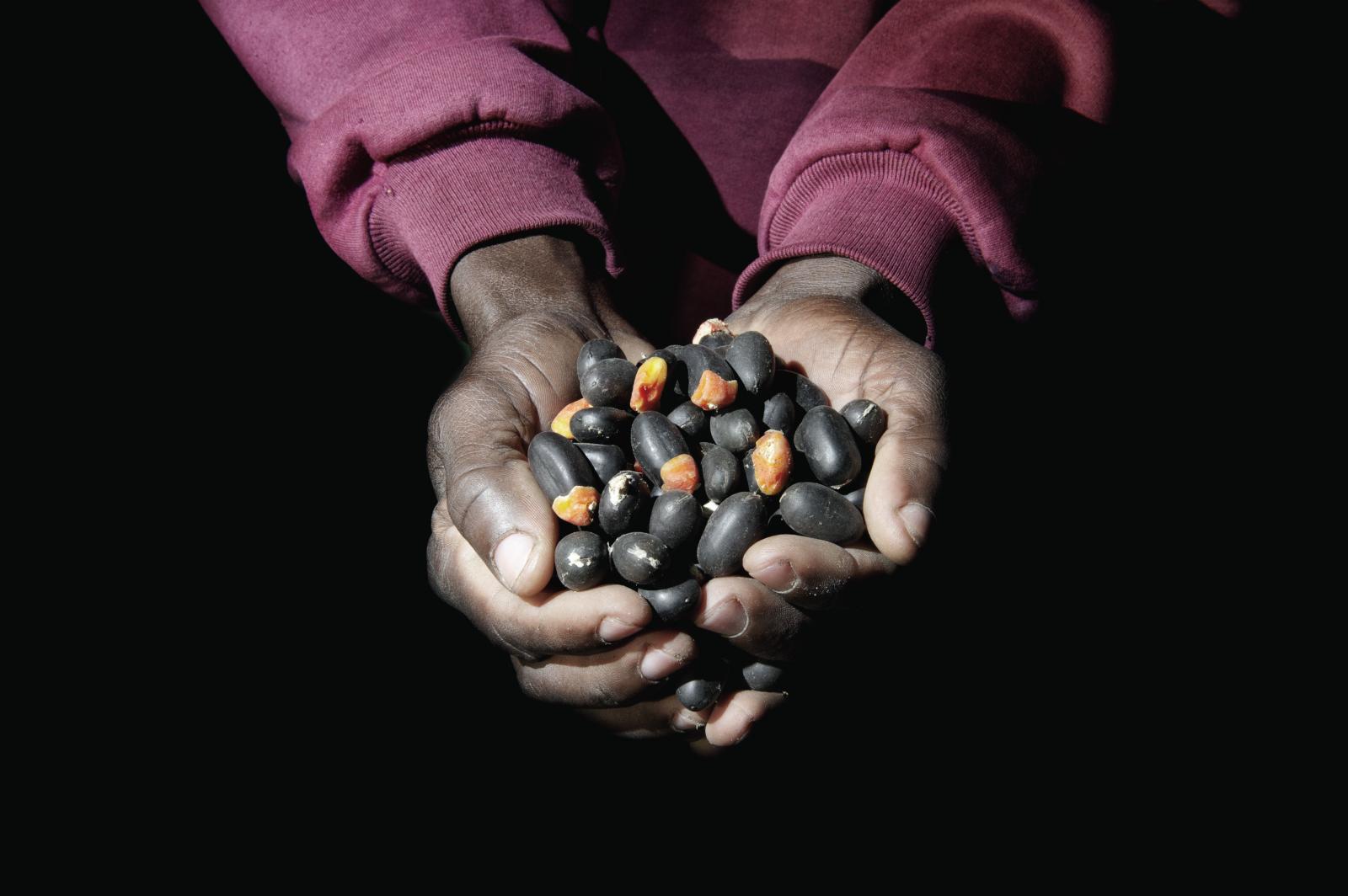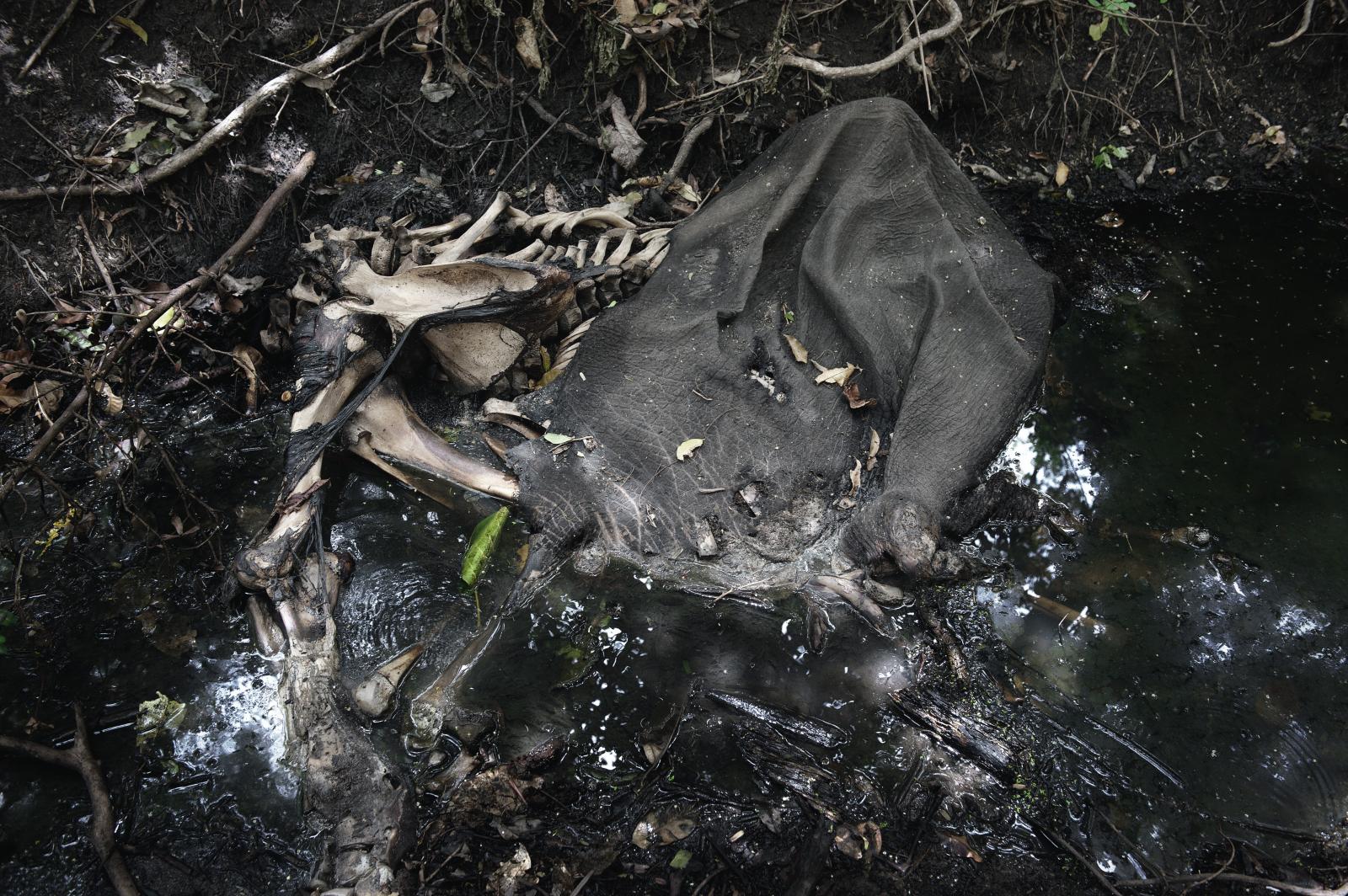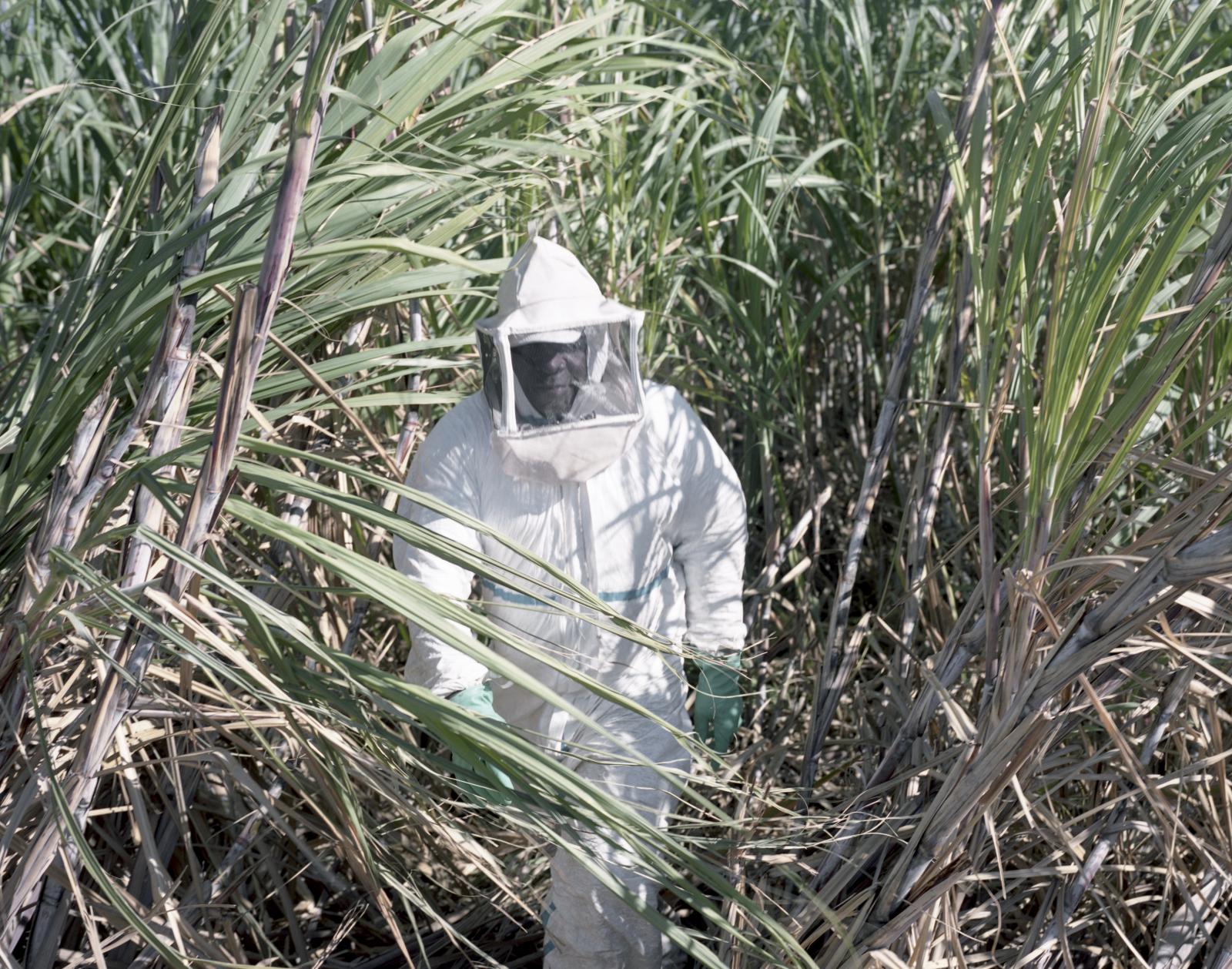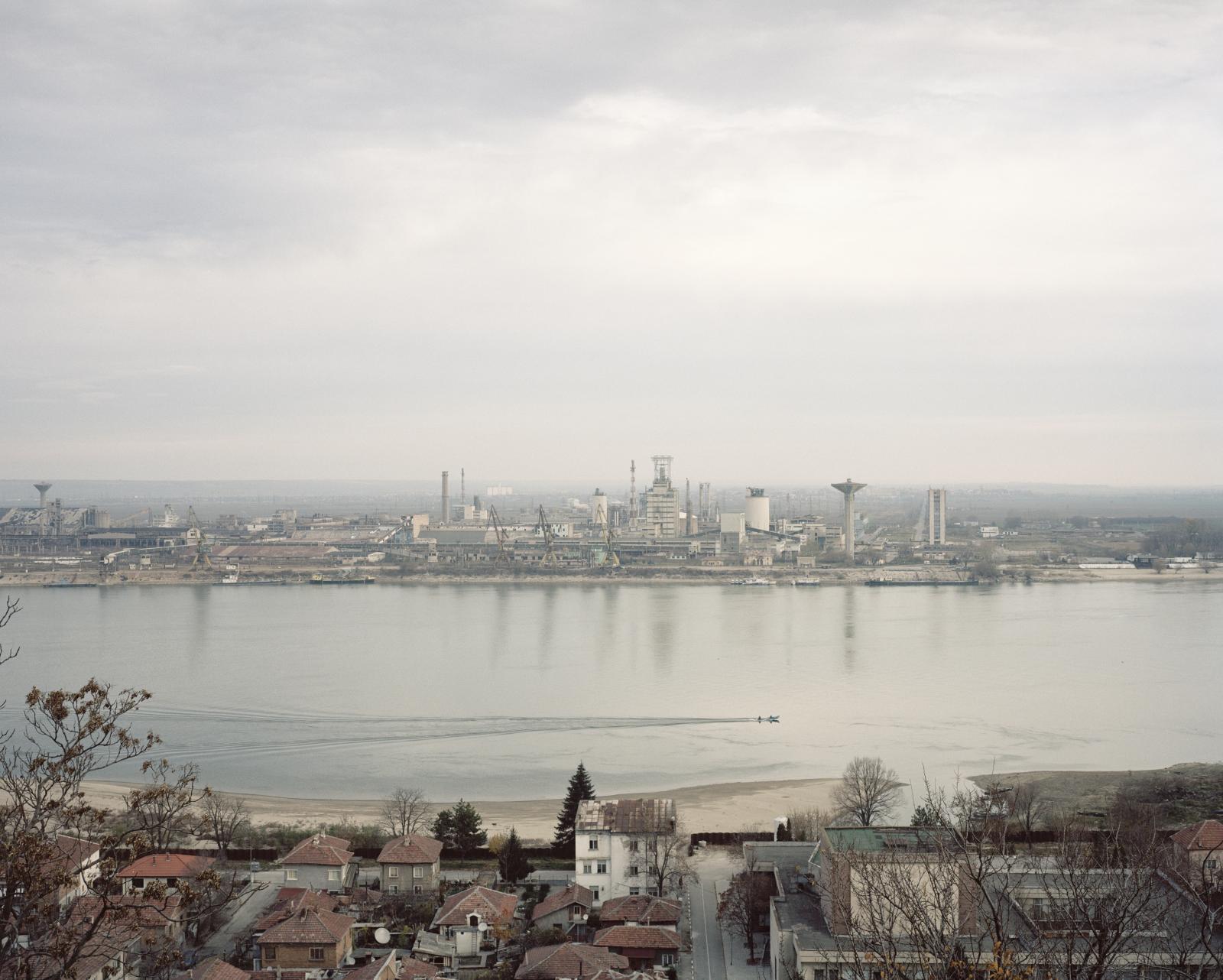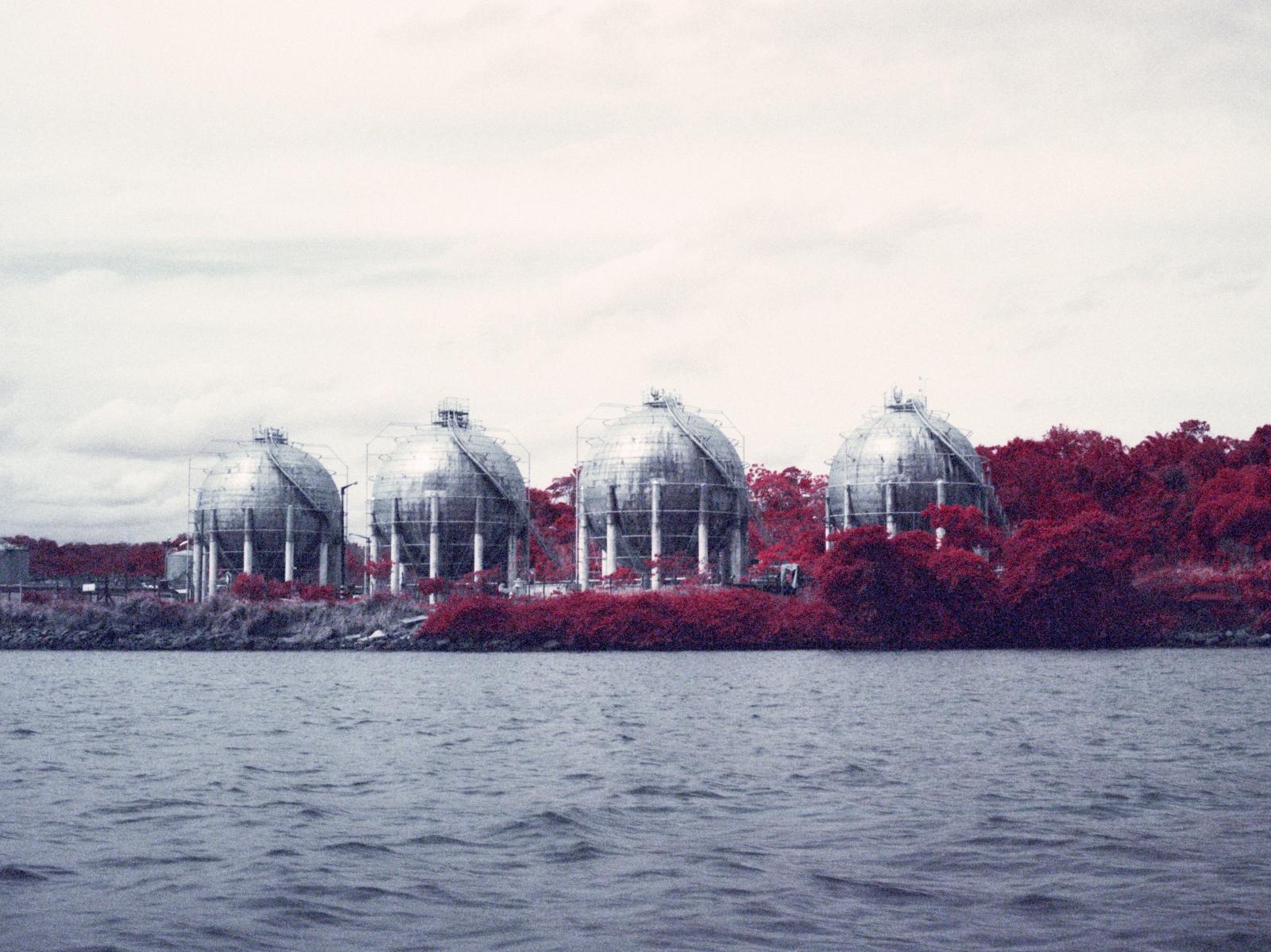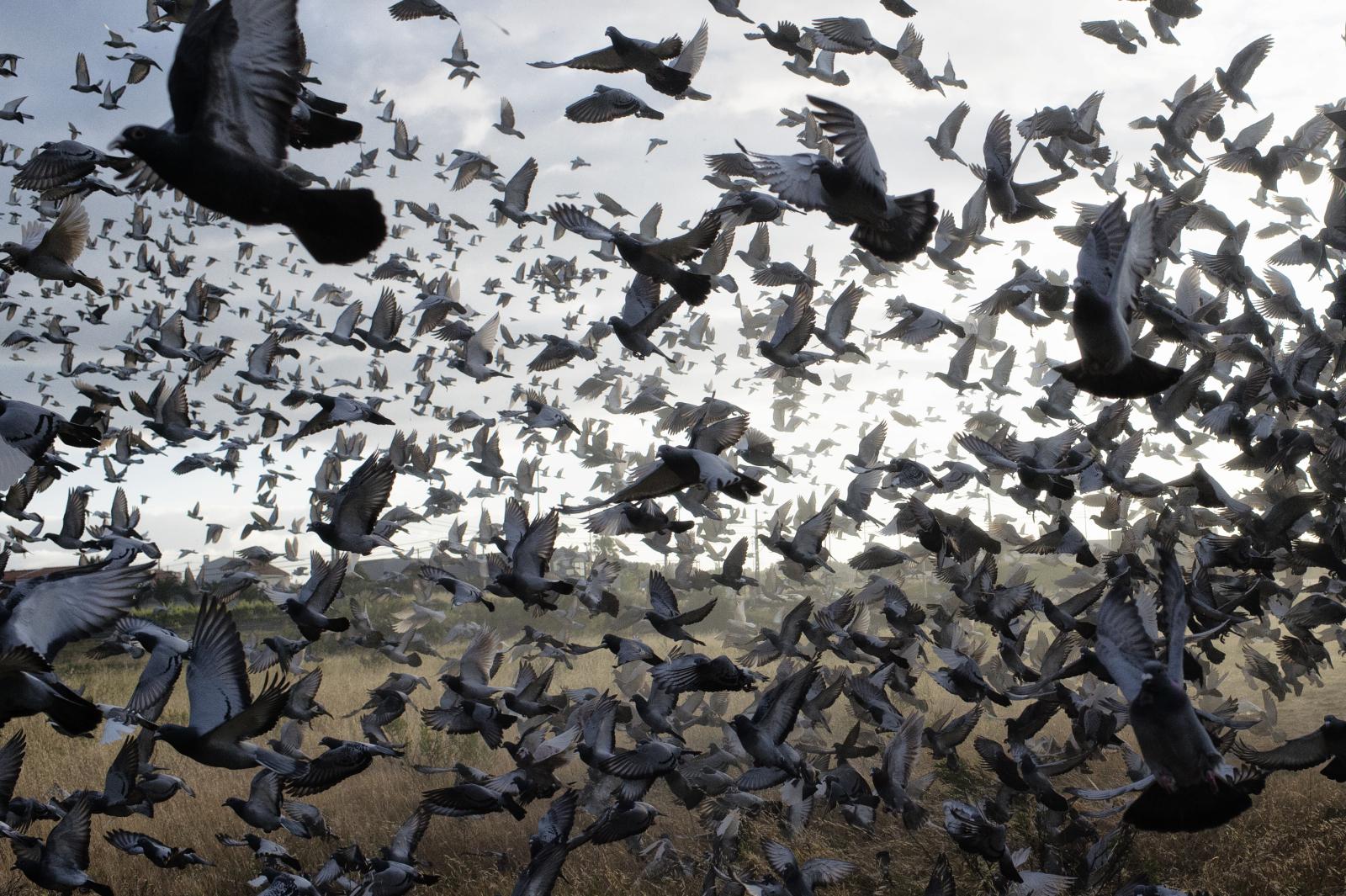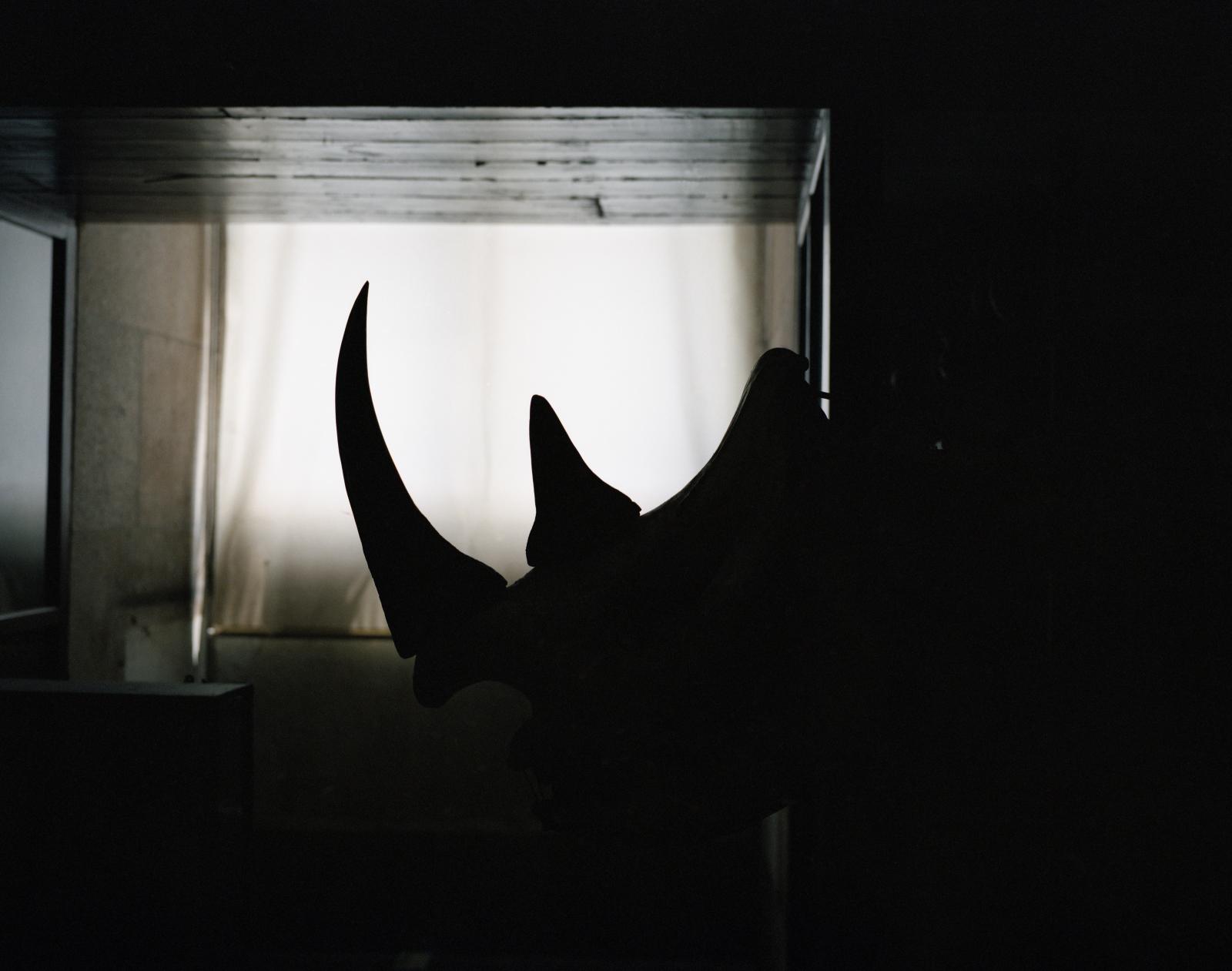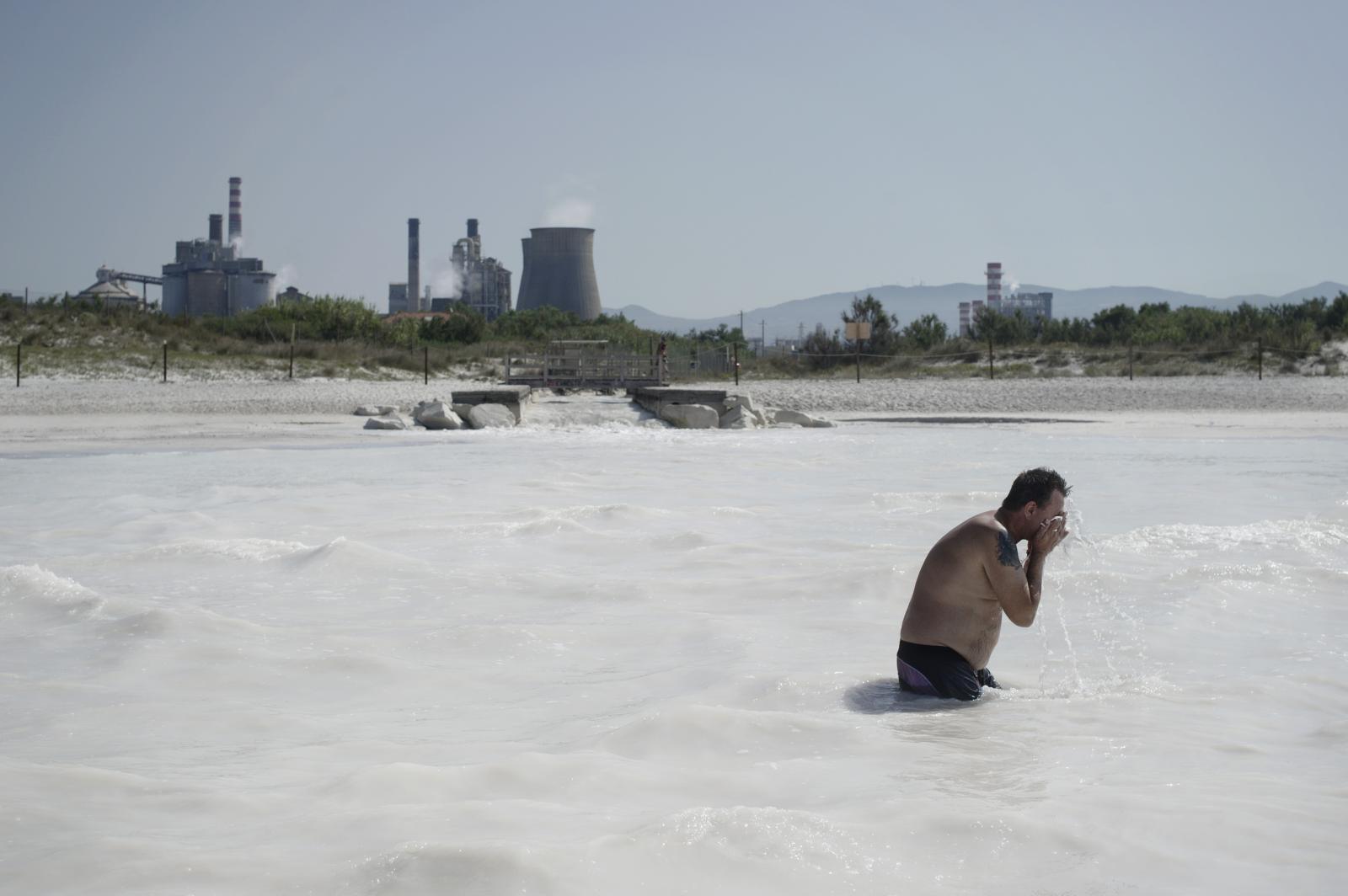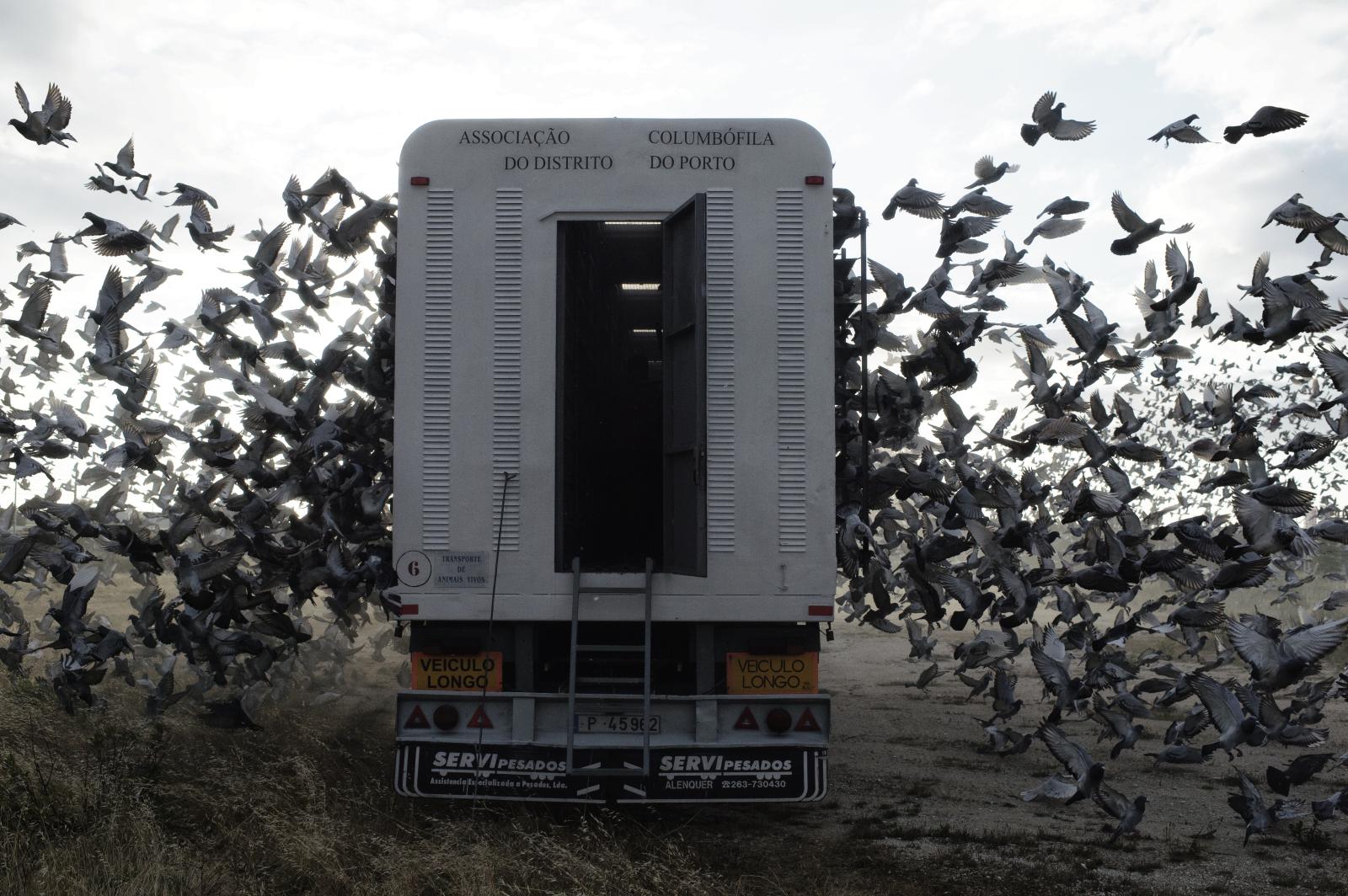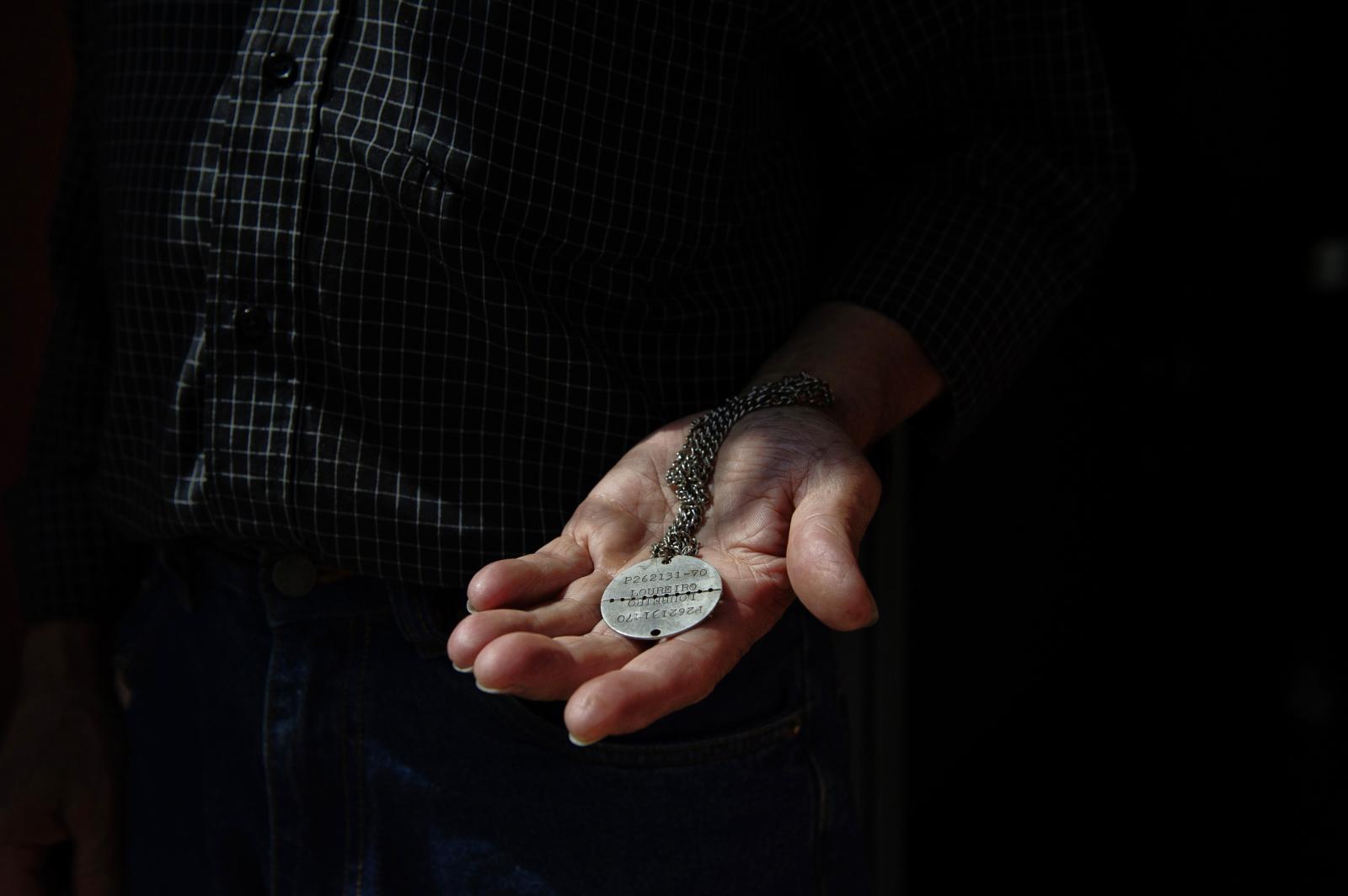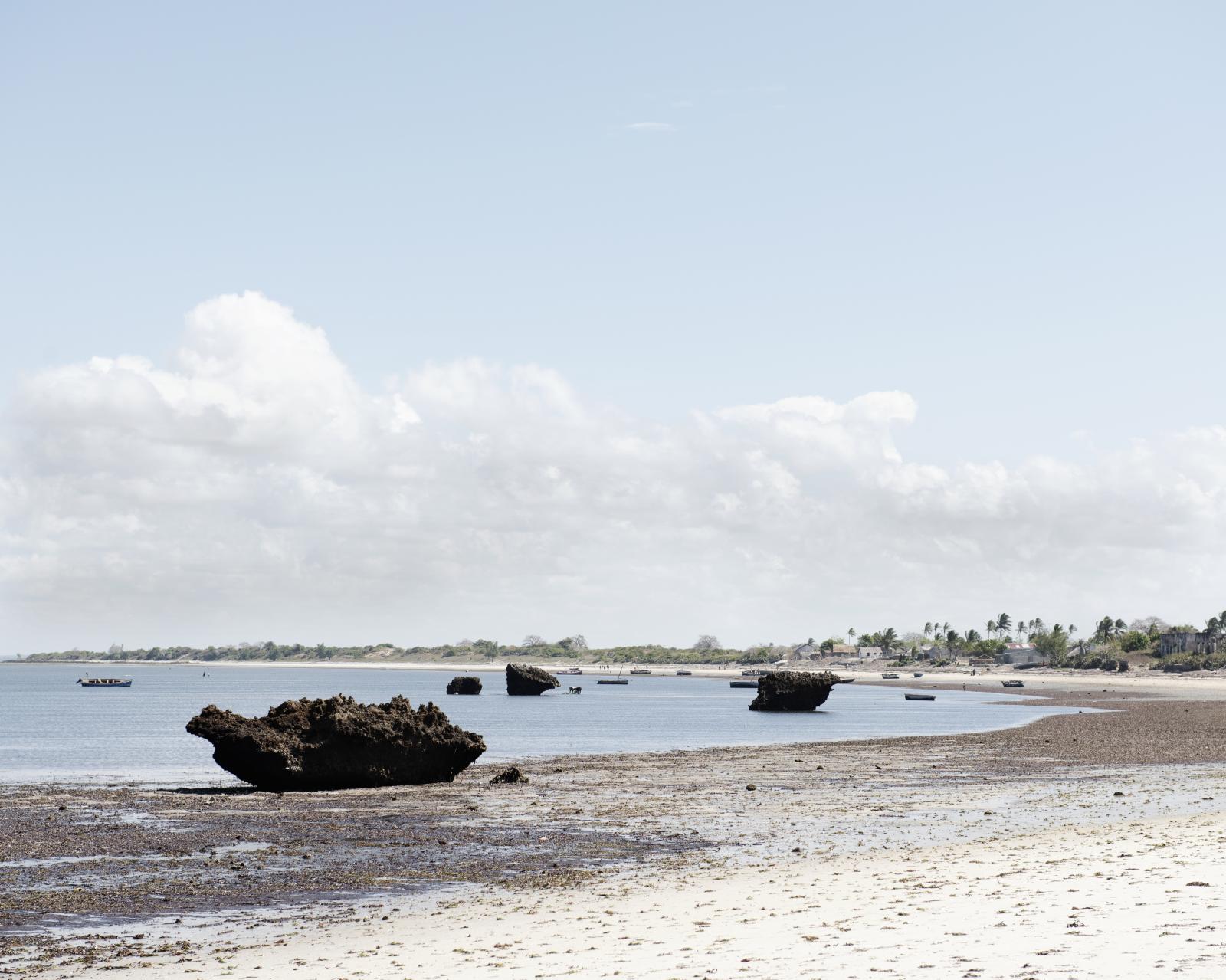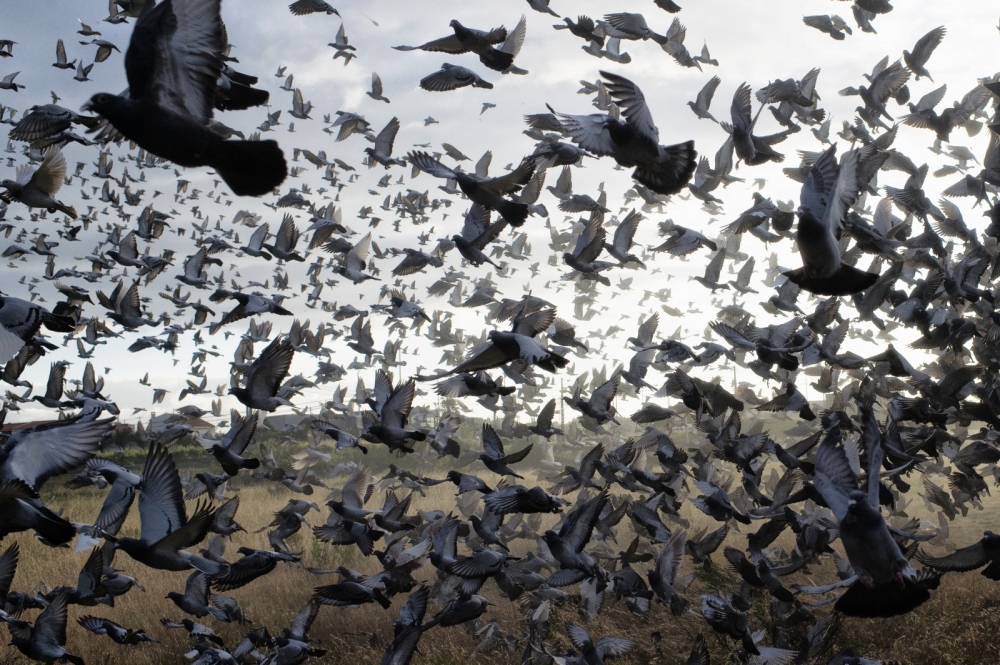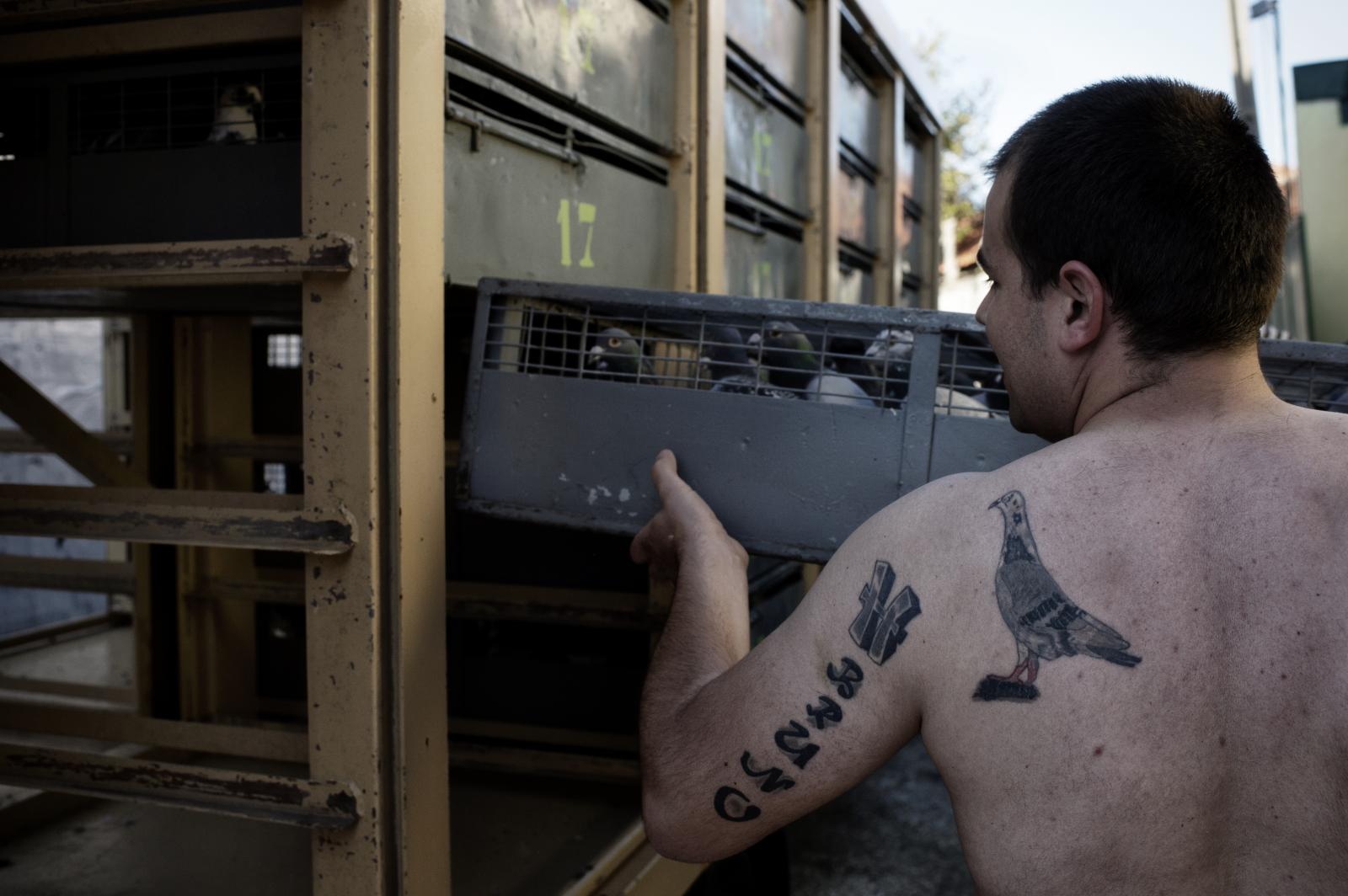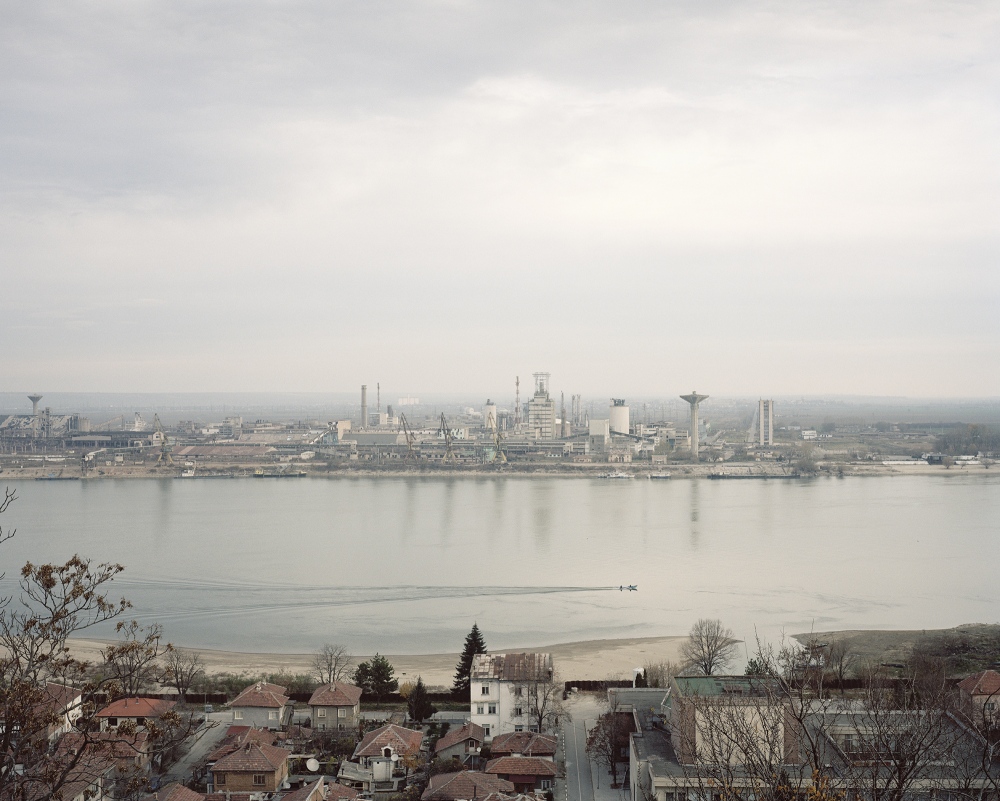
Santa Rosa do Pretos, Maranhão, Brazil. Josiclea “Zica” Pires throws a rock agains the mining company train that cross the lands of the Quilombo. The construction of the rail dried a water channel used for fishing and irrigation by the people of the Quilombo. Today the community doesn’t fish and farm any more.
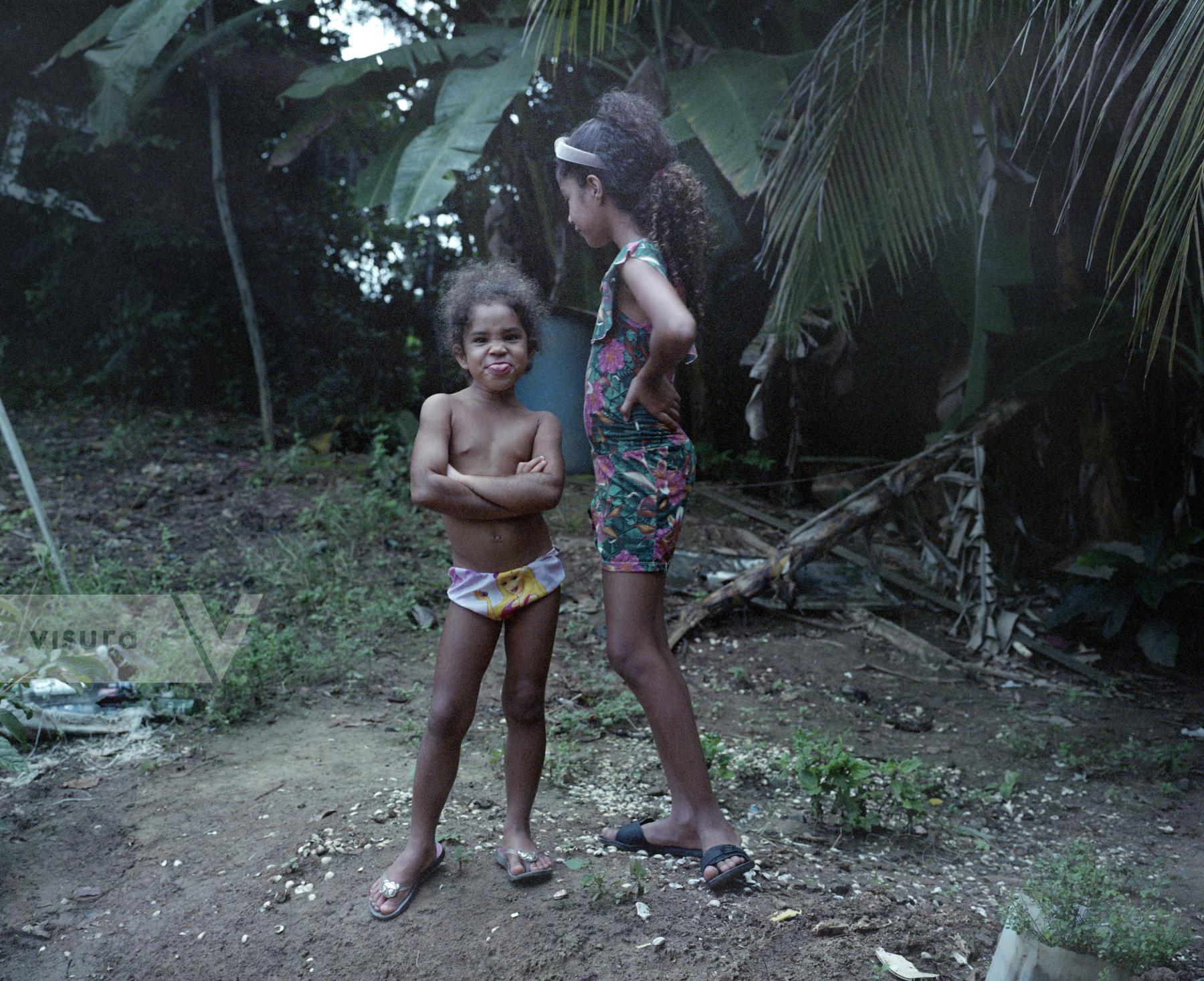
Candeias. Brazil. Ester and her cousin stand in front of their garden. Ester is the daughter of Elaine, one of the leaders of the Quilombo "Boca do Rio". "Boca do Rio" was community of 6000 people, since the building of the commercial port of Aratu, that surround the Quilombo", the population dramatically decreased. The constructions works for the port expansion and the presence of several petrochemical companies make the life of the Quilombola very difficult: they don't have easy access to their home, the city hall service (school bus, tap water, sewer) aren't provided to the community and the pollution from the companies is very high.

Belo Vale. Brazil. An object used to torture slaves is seen in the Slavery Museum of Belo Vale. The Slavery Museum is one of the few institution in Brazil that shows the slavery past of the Country.
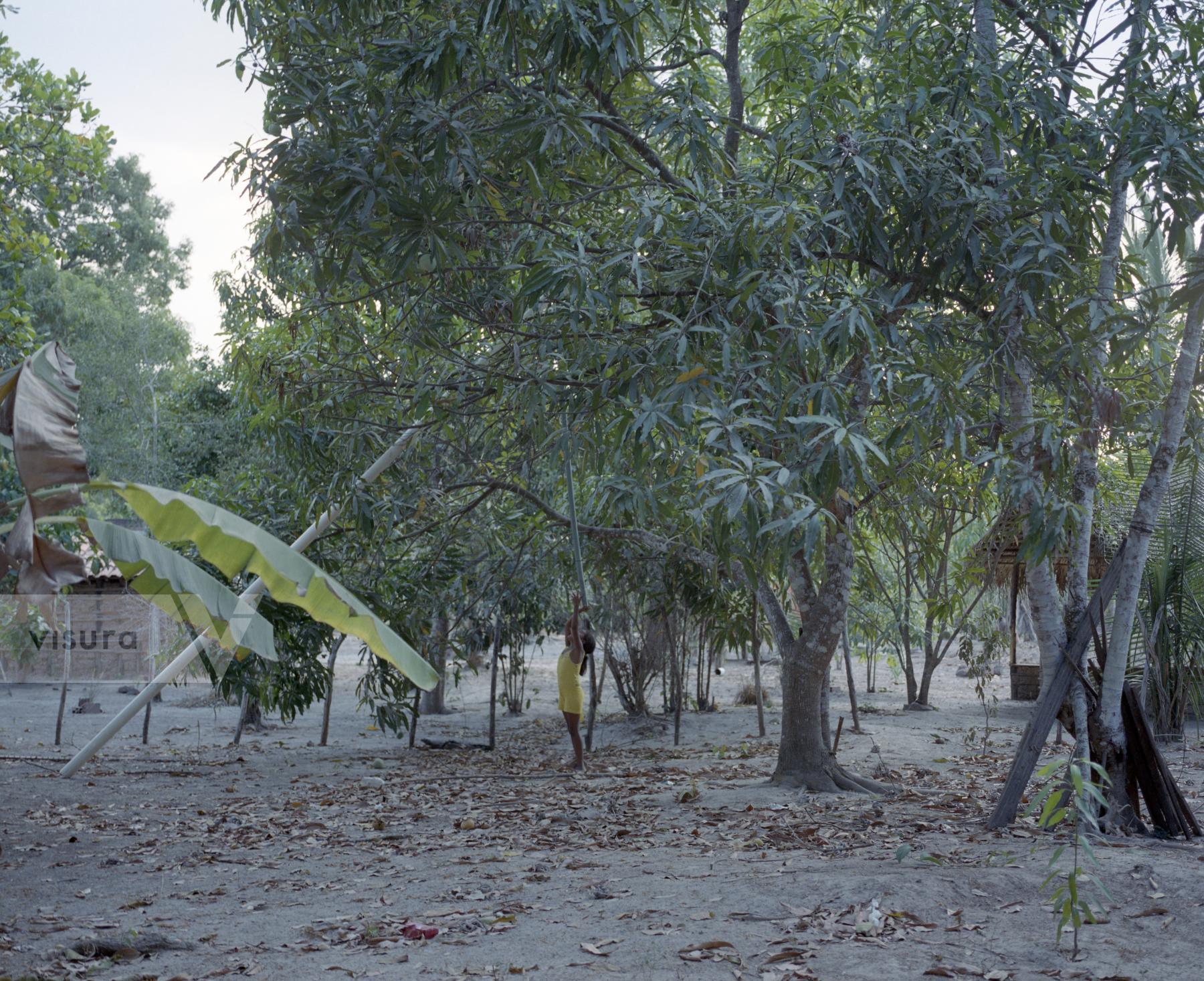
Santa Rosa dos Pretos, Maranhão, Brasil. Bia, a girl from the Quilombo of Santa Rosa dos Pretos is collecting mangos from the yard tree.
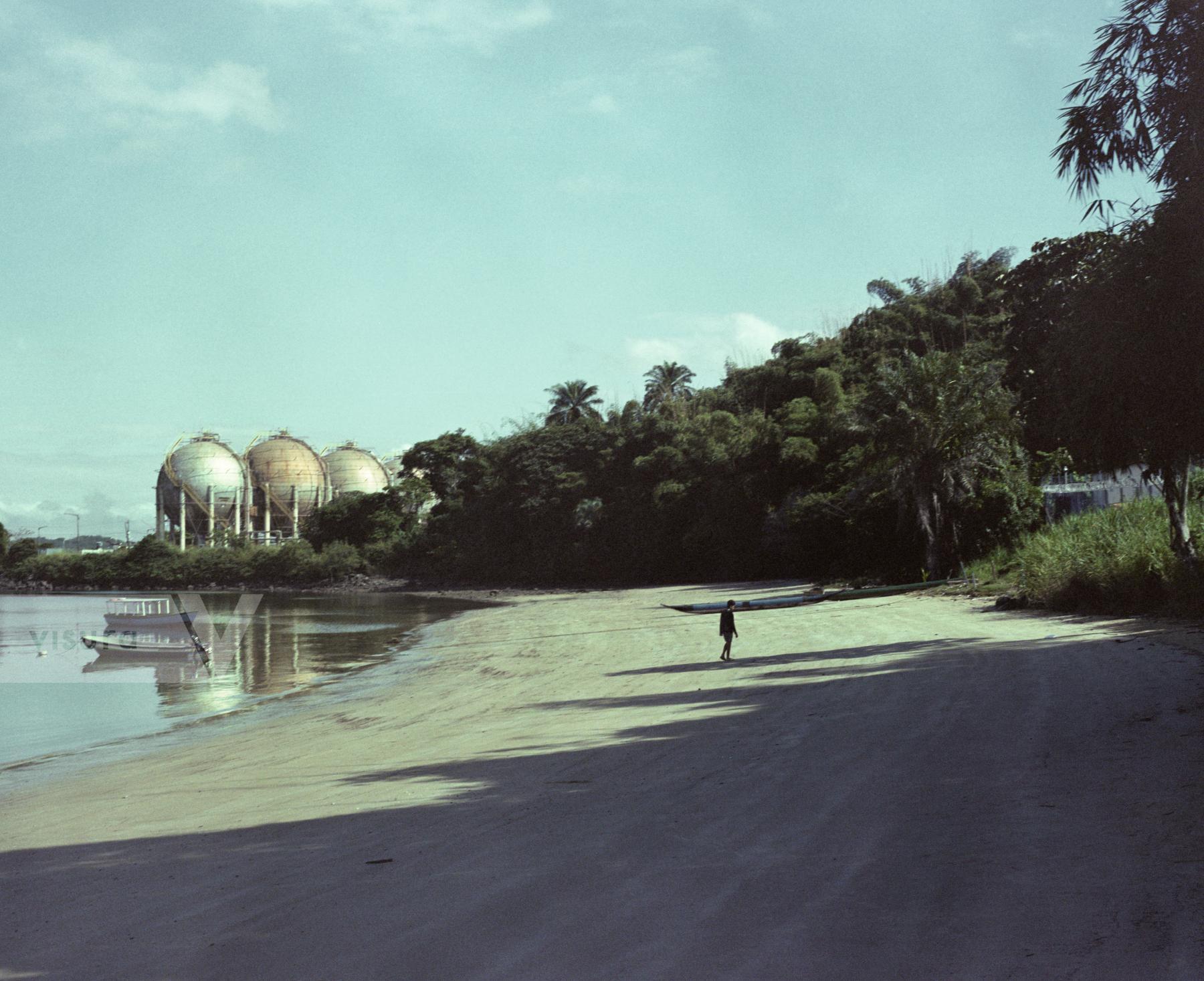
Candeias, Brazil. A kid from the Quilombo "Boca do Rio" walks in the nearby beach. "Boca do Rio" was community of 6000 people, since the building of the commercial port of Aratu, that surround the Quilombo", the population dramatically decreased. The constructions works for the port expansion and the presence of several petrochemical companies make the life of the Quilombola very difficult: they don't have easy access to their home, the city hall service (school bus, tap water, sewer) aren't provided to the community and the pollution from the companies is very high.
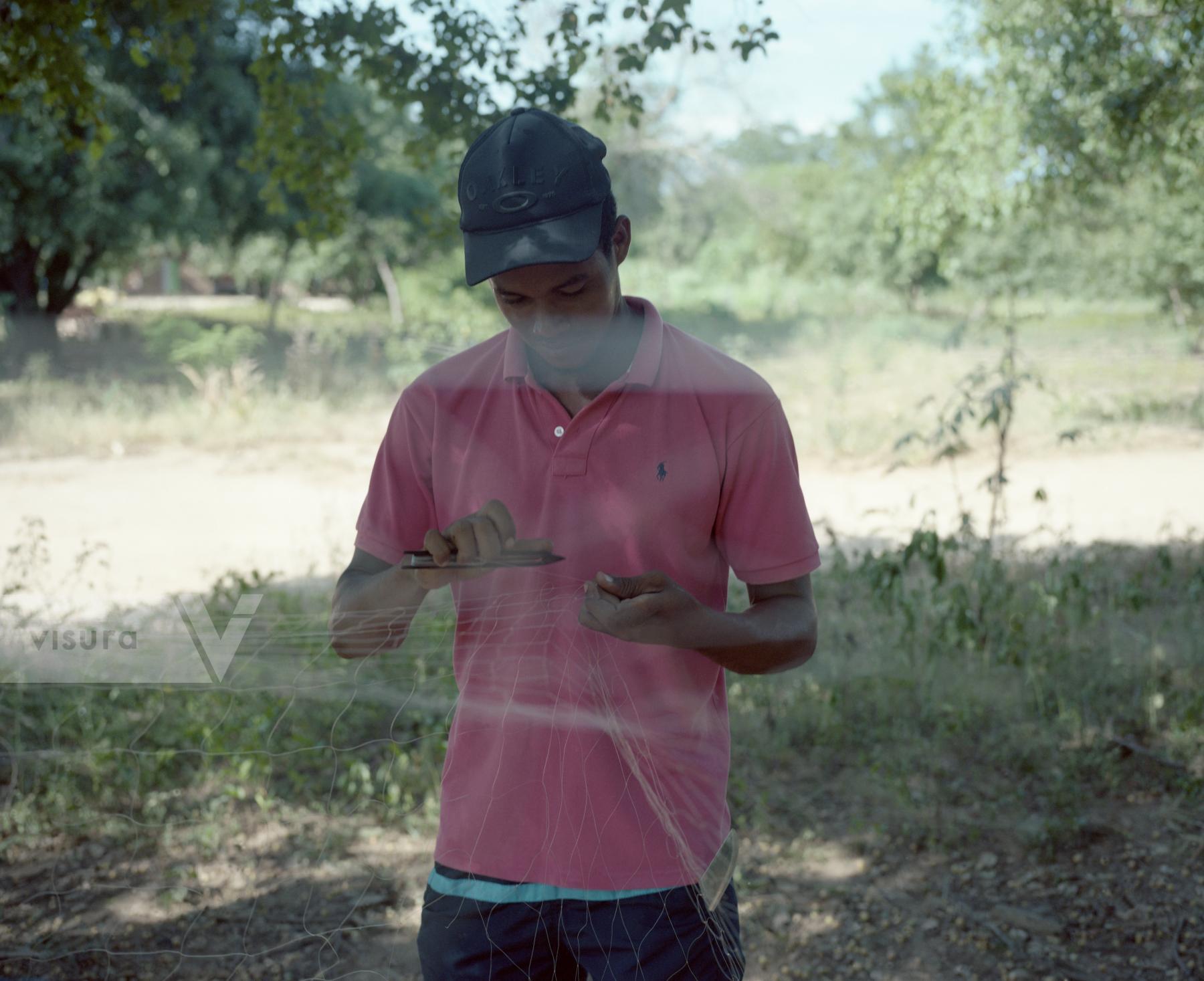
Januaria, Minas Gerais. A fisherman of the Quilombo of Croatá. Since the collapse of the mine in Brumadinho, the fishermem of the Quilombo are claiming that there aren’t fishes in the River.

Ilha da Maré, Bahia. Daily life in the Quilombo of Ilha da Maré. The community lives of fishing mainly provided by fisherwomen. The Quilombo's communities of Ilha da Maré are deeply affect by the pollution caused by petrochemical factories located in the area.

Candeias, Brazil. Davi, a young member of the Quilombo "Boca do Rio", stands in front of fish nets. The main economical activities of the Quilombola of "Boca do Rio" is fishing and selling food to the tourists in the nearby beach. After the activity of some company that eradicate the mangrove forests in the area to built part of the Aratu's Port, fishing and collecting seafood became almost impossible. "Boca do Rio" was community of 6000 people, since the building of the commercial port of Aratu, that surround the Quilombo", the population dramatically decreased. The constructions works for the port expansion and the presence of several petrochemical companies make the life of the Quilombola very difficult: they don't have easy access to their home, the city hall service (school bus, tap water, sewer) aren't provided to the community and the pollution from the companies is very high.

Ilha da Maré, Bahia. Children from Ilha da Maré spend time in front of the seaside. The Ilha da Mare is the home of several Quilombola’s communities that live of fishing. The waters where they fish are polluted with petrochemical residues and other chemical components. On the land of the island is possible to spot places where the oil come out from the ground. Most of the activists of the Island are women and they carry on the unity of the community and the fight for their basic rights.
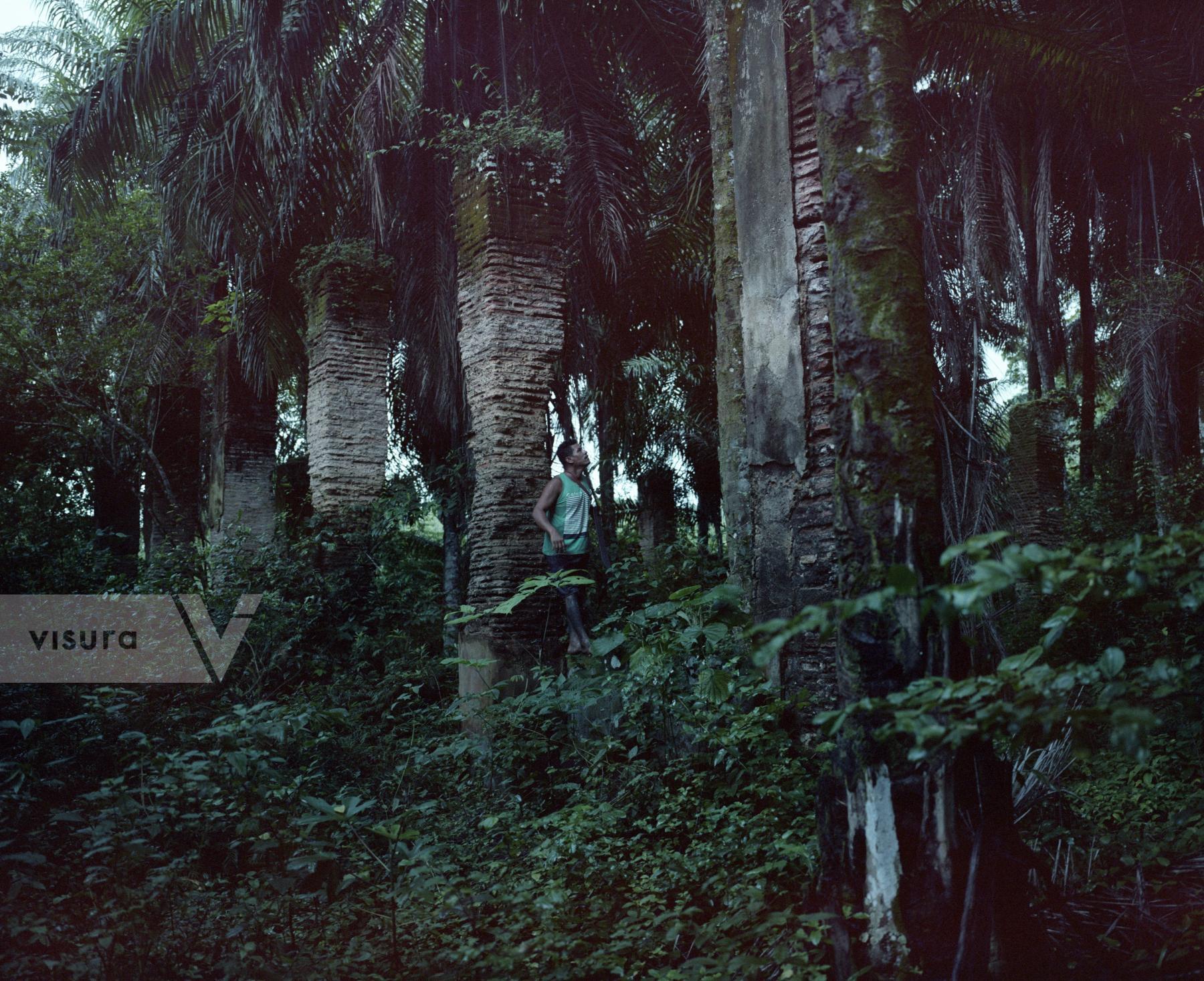
Candeias, Brazil. Elaine's husband stand in the ruins of the engenho, an ancient sugar cane mill and the farm. Most of the workers of the engenho were slaves and ancestors of the members of the Quilombo "Boca do Rio". The ruins of the engenho represent a historical memory for the Quilombolas. In the past the Quilombolas had access to the location by a short walk, today is necessary a 30 minutes trip by boat because local industries forbidden to arrive to the place by land. "Boca do Rio" was community of 6000 people, since the building of the commercial port of Aratu, that surround the Quilombo", the population dramatically decreased. The constructions works for the port expansion and the presence of several petrochemical companies make the life of the Quilombola very difficult: they don't have easy access to their home, the city hall service (school bus, tap water, sewer) aren't provided to the community and the pollution from the companies is very high.
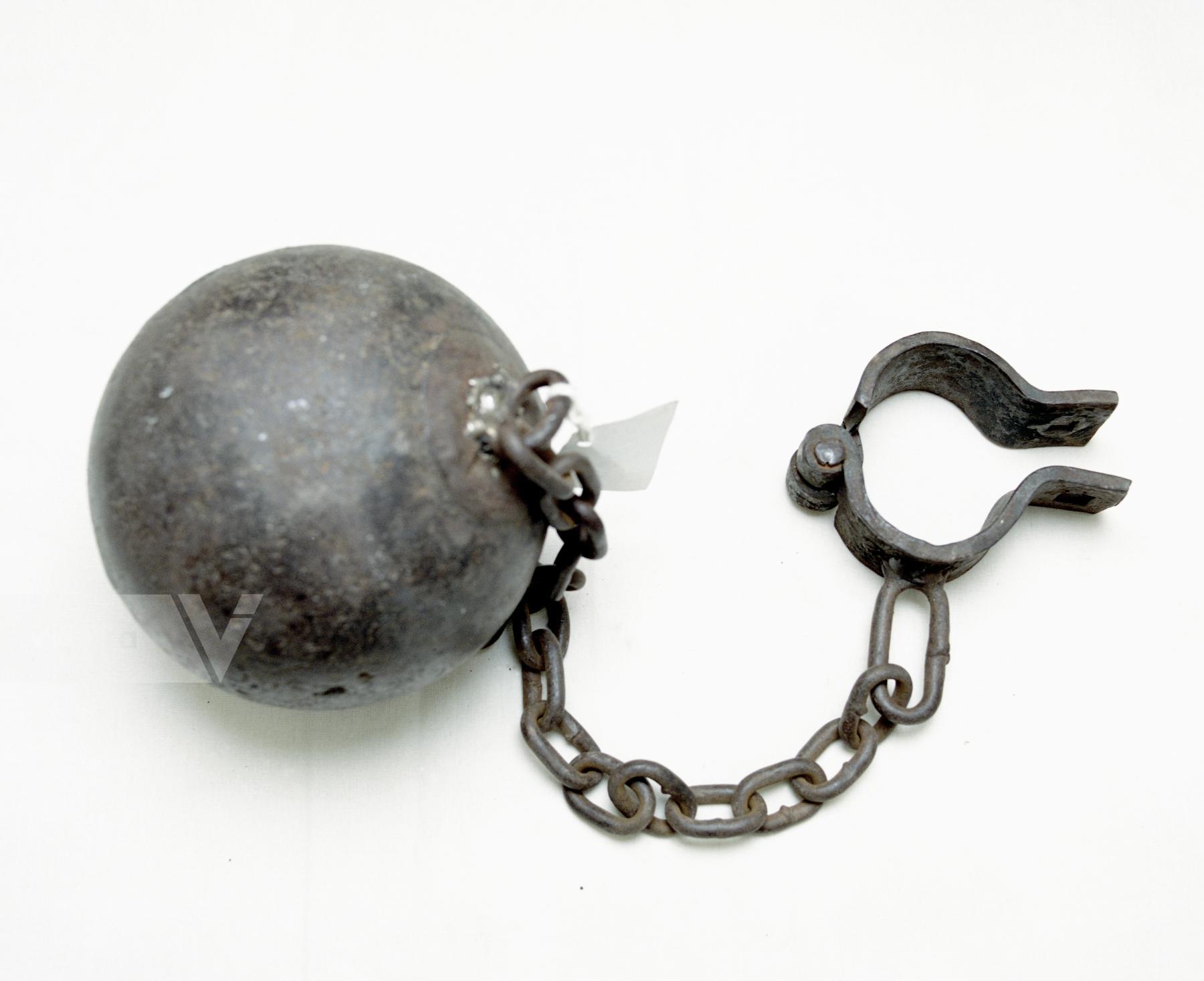
Belo Vale. Brazil. An object used to torture slaves is seen in the Slavery Museum of Belo Vale. The Slavery Museum is one of the few institution in Brazil that shows the slavery past of the Country.

Ilha da Maré, Bahia. A group of fisherwomen during a meeting of the Community. The leaders of the Quilombo of Ilha de Maré are mainly women and are the ones that fish and catch seafood. Because of the high petrochemical pollution their still of life has been deeply affected. The Quilombolas claim they are discriminated by environmental racism.
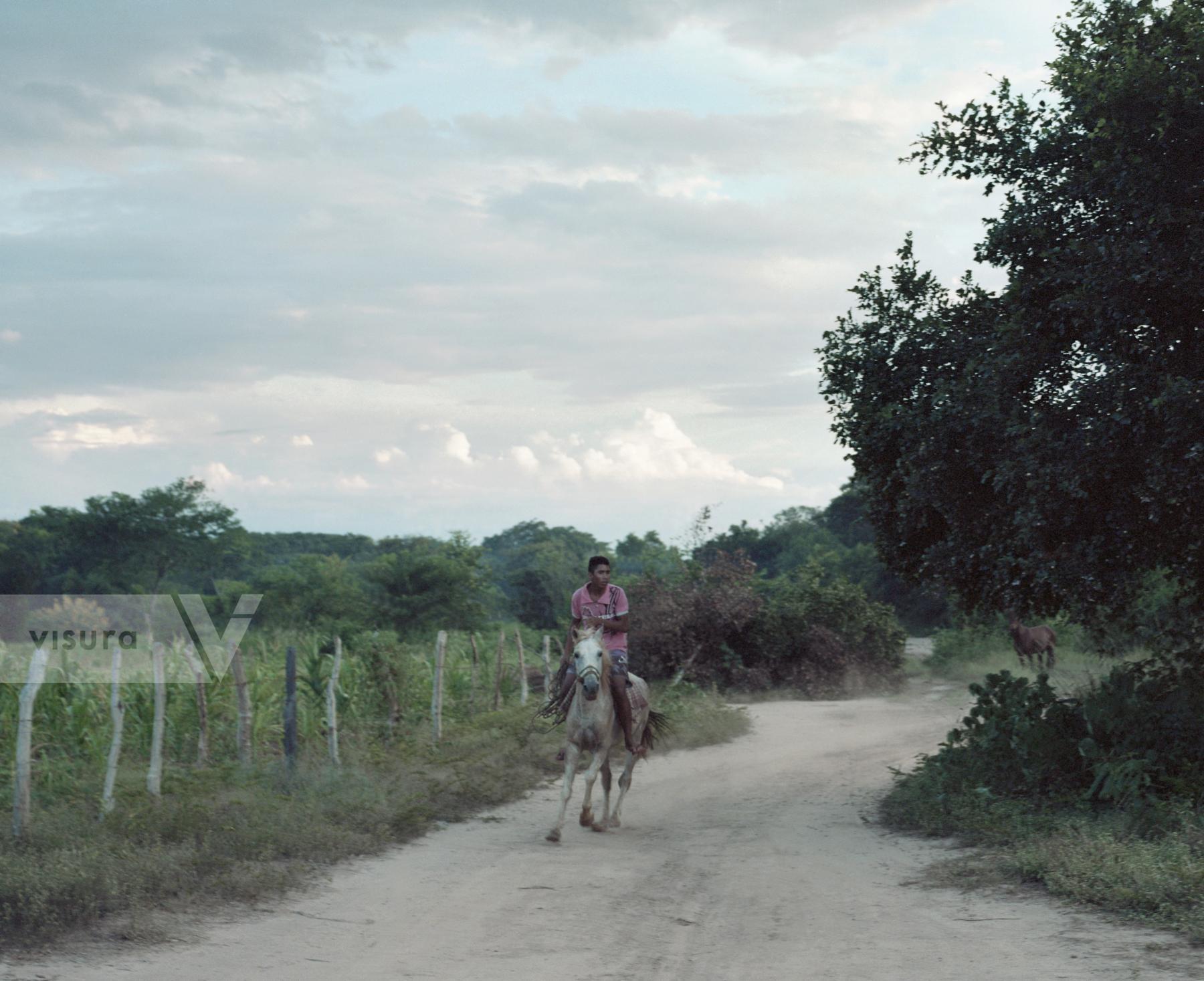
Januaria, Minas Gerais. A local boy of the Quilombo of Croatá rides on his horse. The Quilombo’s Community ask several time to the city hall to take care of the roads but they didn’t carried on the works of mainteinance.
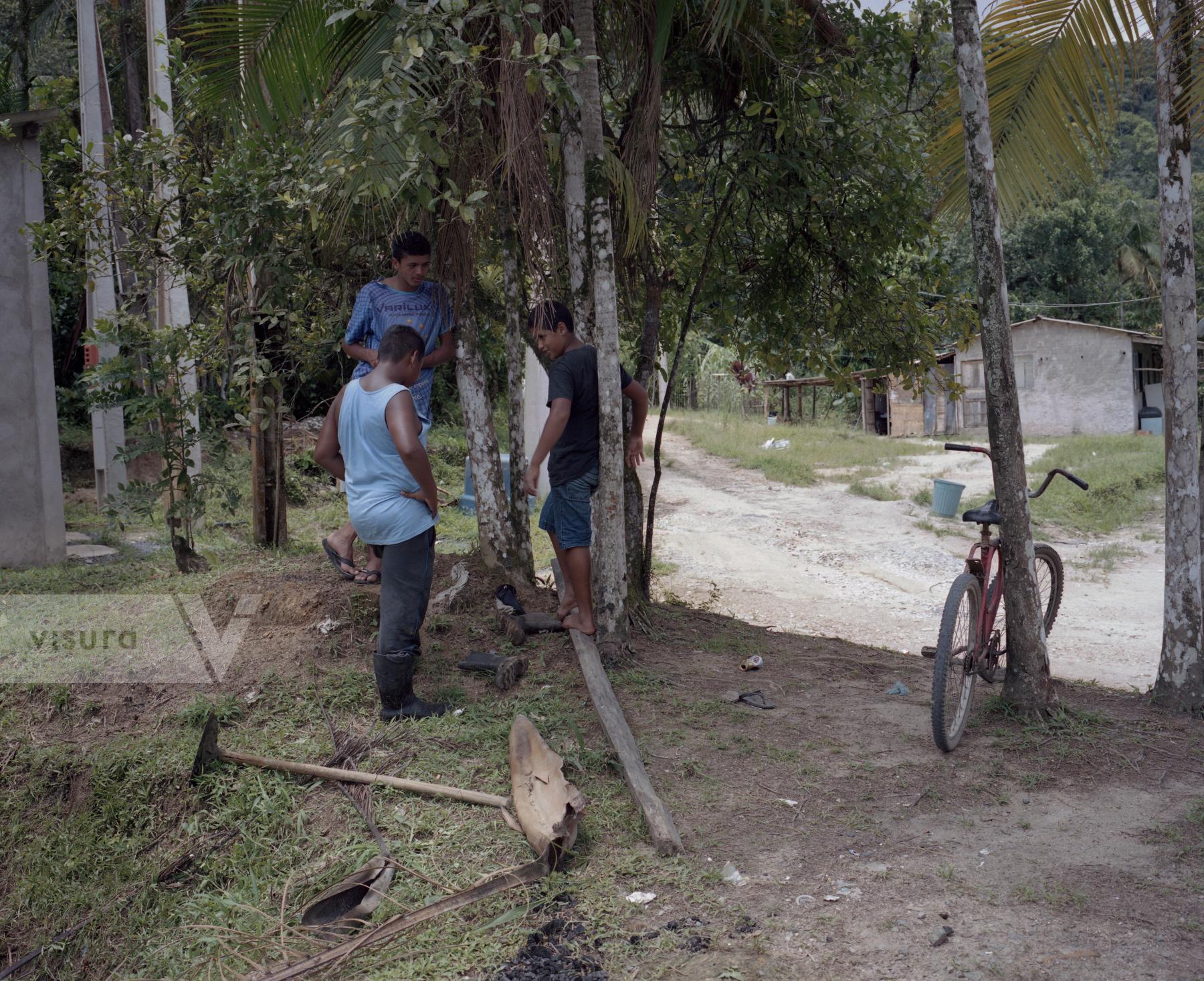
Cananeia, Brasil. Quilombo do Mandira. Young boys belonging to the families of the Quilombo take care of the spring waters channels that arrive to the community.
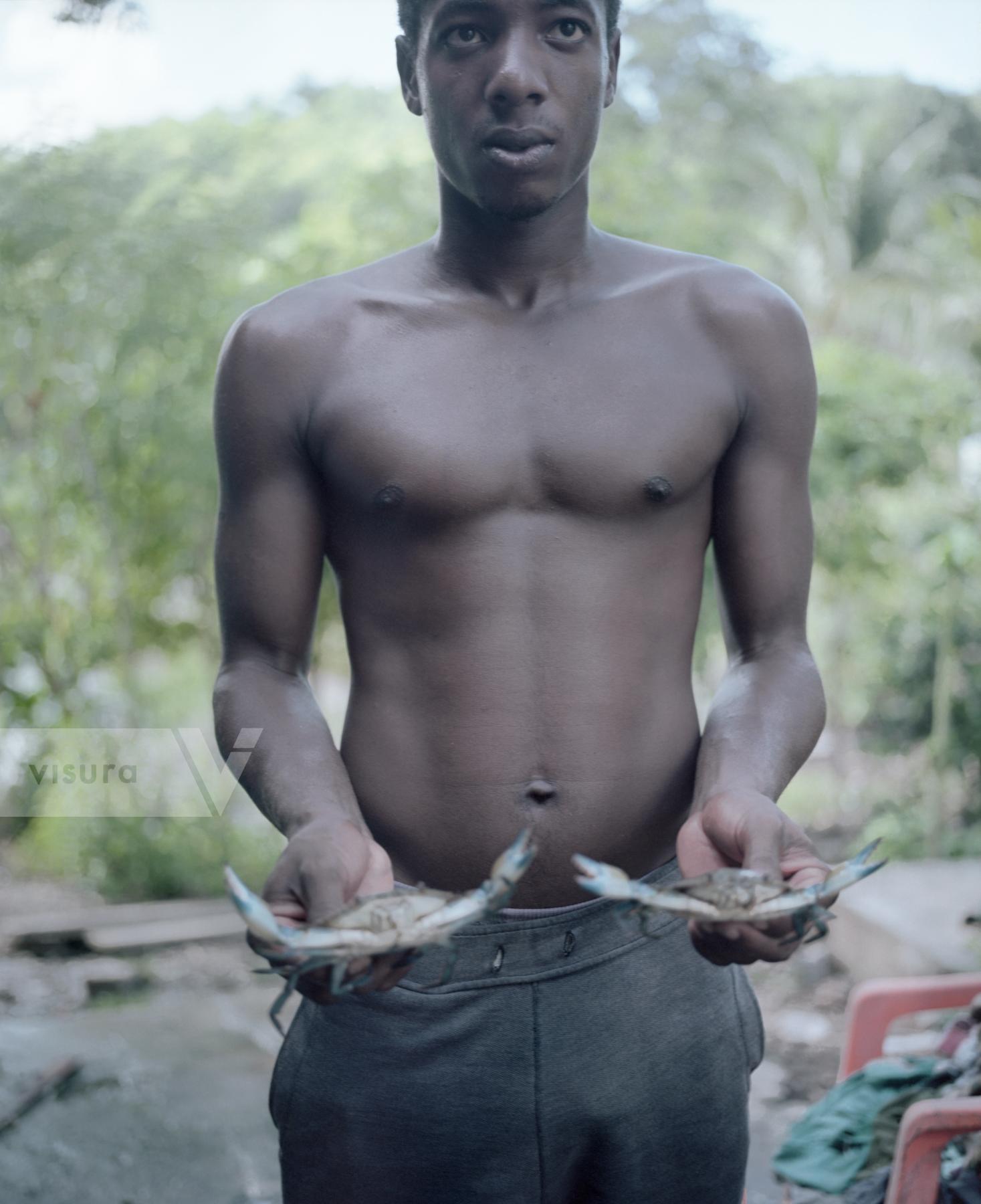
Ilha da Maré, Bahia. Diego, the son of the activist Eliete Paraguassu, shows 2 fished crabs, the main product sold by the Quilombolas. The Ilha da Mare is the home of several Quilombola’s communities that live of fishing. The waters where they fish are polluted with petrochemical residues and other chemical components. On the land of the island is possible to spot places where the oil come out from the ground. Most of the activists of the Island are women and they carry on the unity of the community and the fight for their basic rights.

Cananeia, Brasil. Quilombo do Mandira. During a rainy day the youngest son of Chico Mandira, the chief of the Quilombo, prepares the boat to retrieve some oyster from the oyster farm.

Ilha da Maré, Bahia. A member of the Quilombo bring back home the fishes he catches. The Ilha da Mare is the home of several Quilombola’s communities that live of fishing. The waters where they fish are polluted with petrochemical residues and other chemical components. On the land of the island is possible to spot places where the oil come out from the ground. Most of the activists of the Island are women and they carry on the unity of the community and the fight for their basic rights.

Belo Vale. Brazil. An object used to torture slaves is seen in the Slavery Museum of Belo Vale. The Slavery Museum is one of the few institution in Brazil that shows the slavery past of the Country.
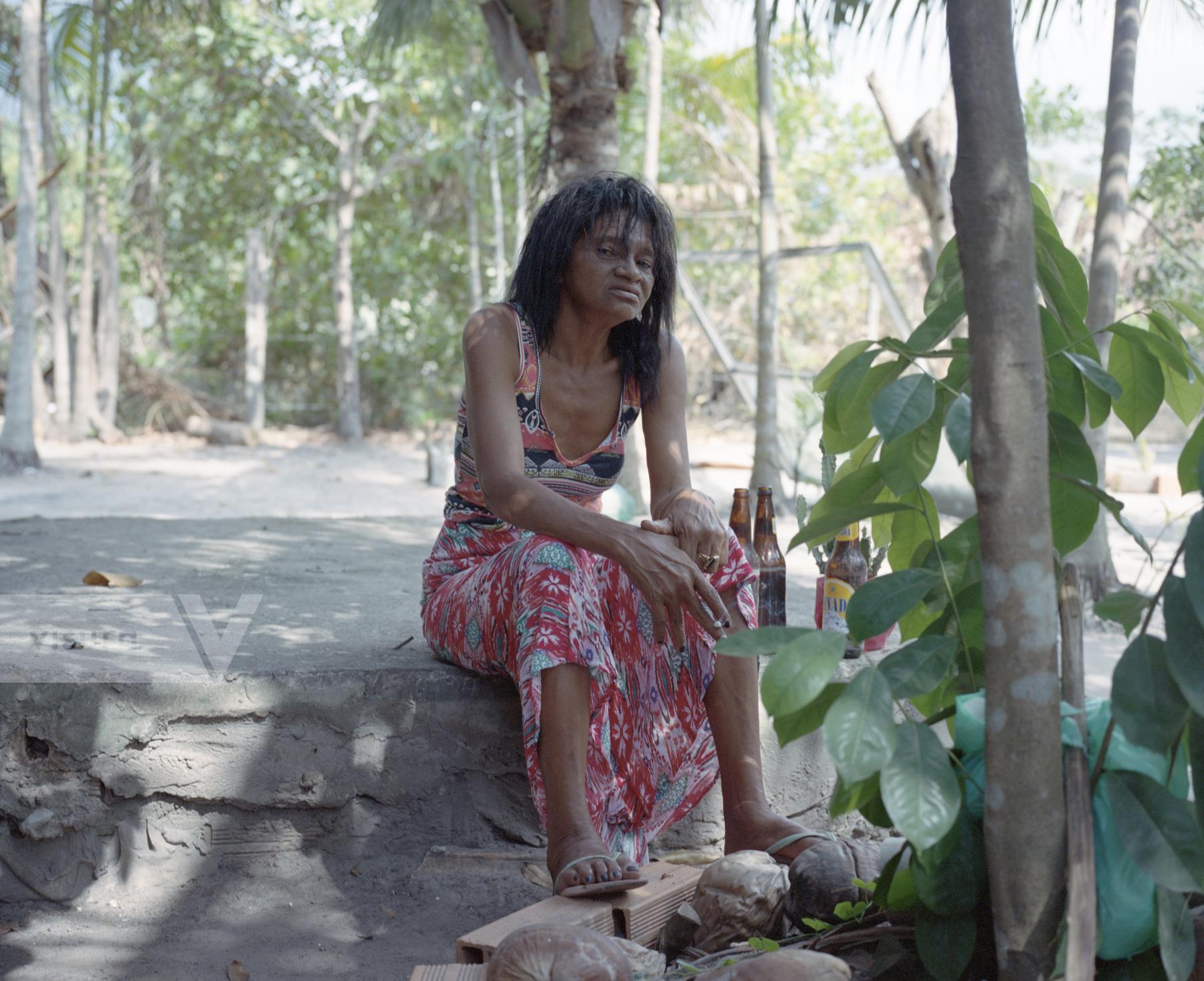
Barcarena, Brazil. Maria do Socorro Silva an activist of one of Barcarena’s Quilombos. Since she reveal the pollution caused by an Aluminium Extraction Company she received several death threats as a warning voice on the telephone, a home in- trusion, a punch in the face, a pistol barrel prodded against the ear.
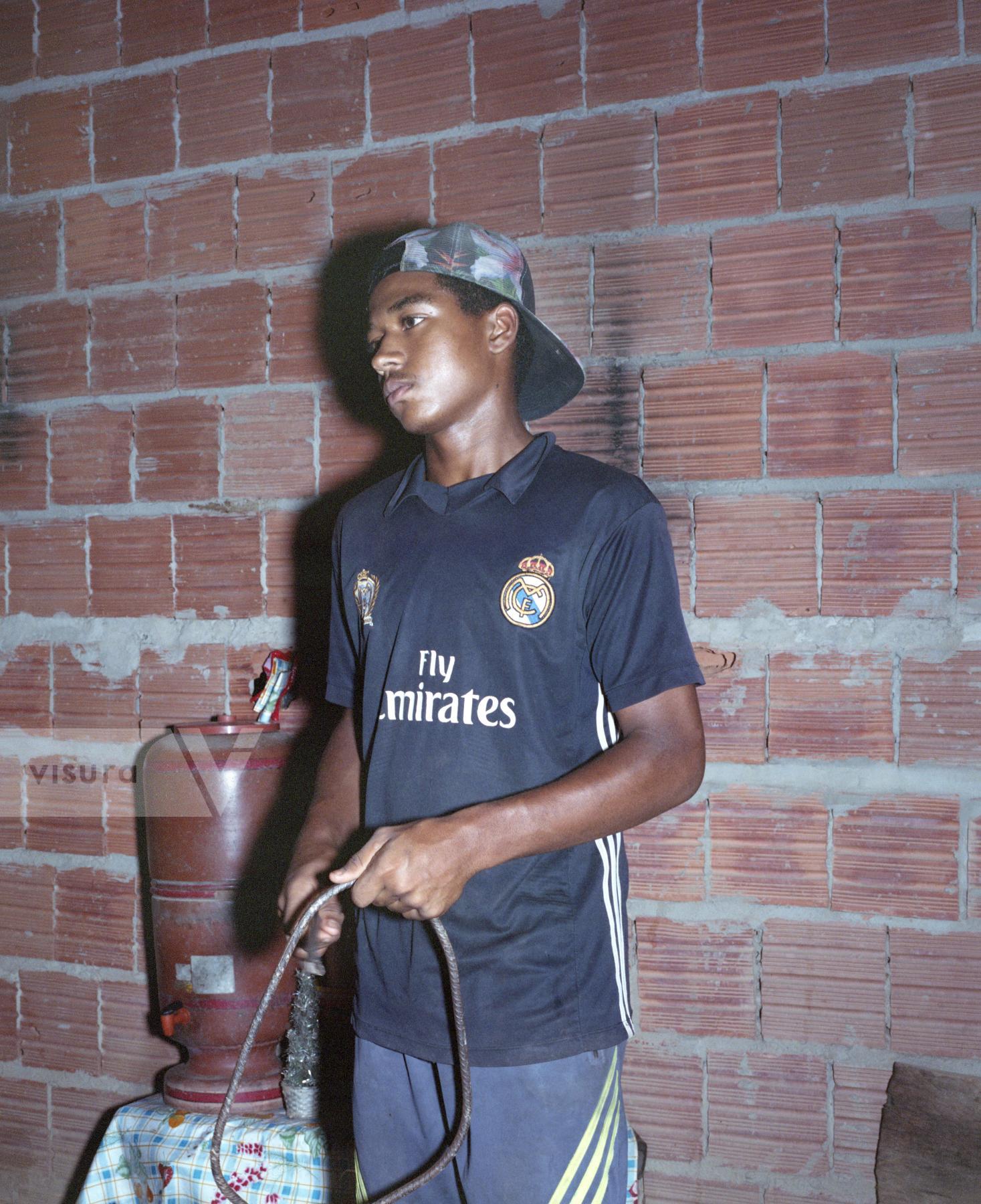
Januaria, Minas Gerais. A local boy of the Quilombo of Croatá play a home made triangle during an improvised music session. The Quilombo’s Community ask several time to the city hall to take care of the roads but they didn’t carried on the works of mainteinance.
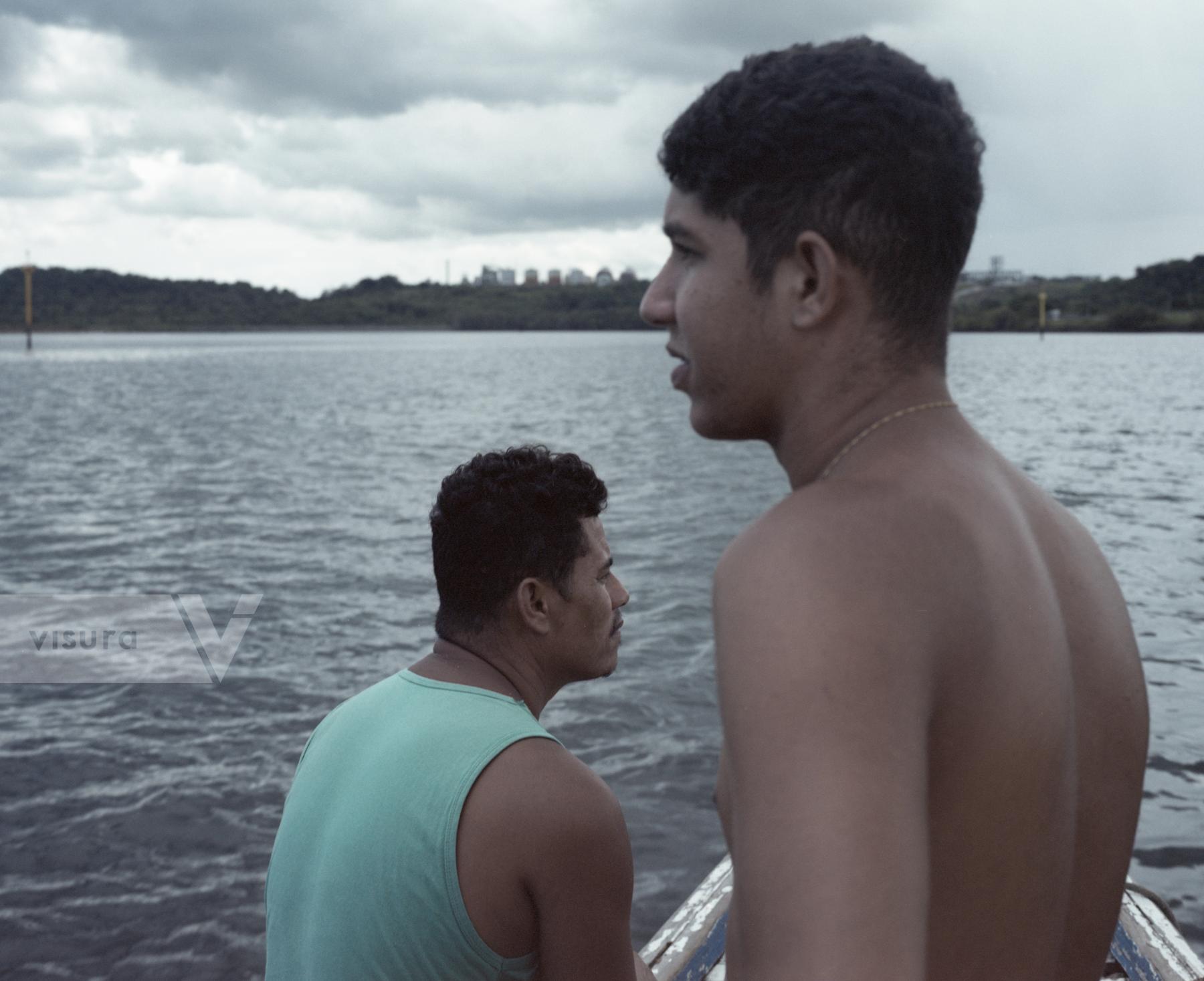
Candeias, Brazil. Davi and Elaine's husband fish in the waters near the Quilombo. "Boca do Rio" was community of 6000 people, since the building of the commercial port of Aratu, that surround the Quilombo", the population dramatically decreased. The constructions works for the port expansion and the presence of several petrochemical companies make the life of the Quilombola very difficult: they don't have easy access to their home, the city hall service (school bus, tap water, sewer) aren't provided to the community and the pollution from the companies is very high.
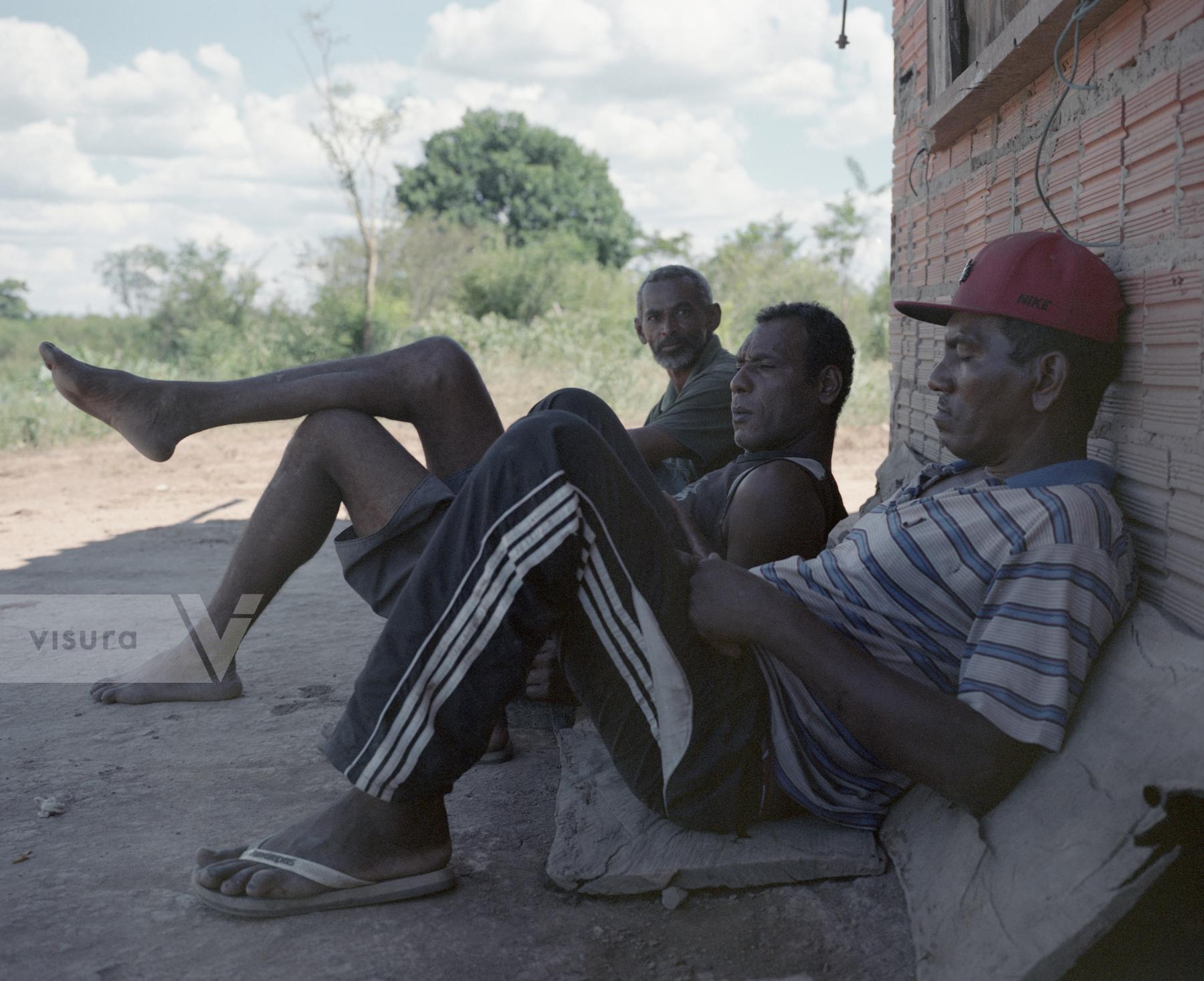
Januaria, Minas Gerais. Quilombo’s farmers rest after a morning of field work. The community of the Quilombo of Croatá is trying to establish some low impact bio culture using the seasonal floods of the Sant Francisco River.
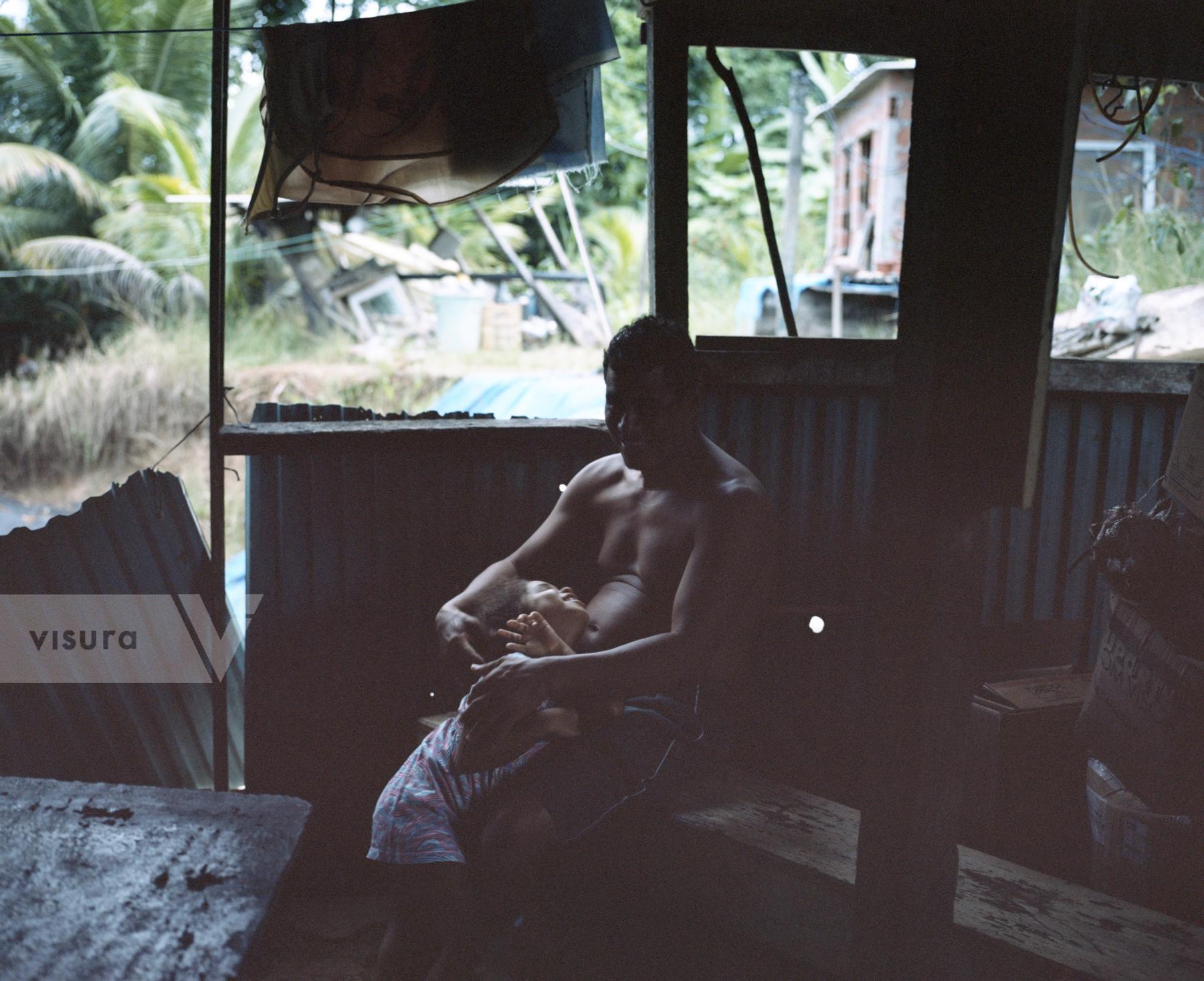
Candeias, Brazil. Elaine's husband play with his nephew in one of the house of the Quilombo "Boca do Rio". "Boca do Rio" was community of 6000 people, since the building of the commercial port of Aratu, that surround the Quilombo", the population dramatically decreased. The constructions works for the port expansion and the presence of several petrochemical companies make the life of the Quilombola very difficult: they don't have easy access to their home, the city hall service (school bus, tap water, sewer) aren't provided to the community and the pollution from the companies is very high.
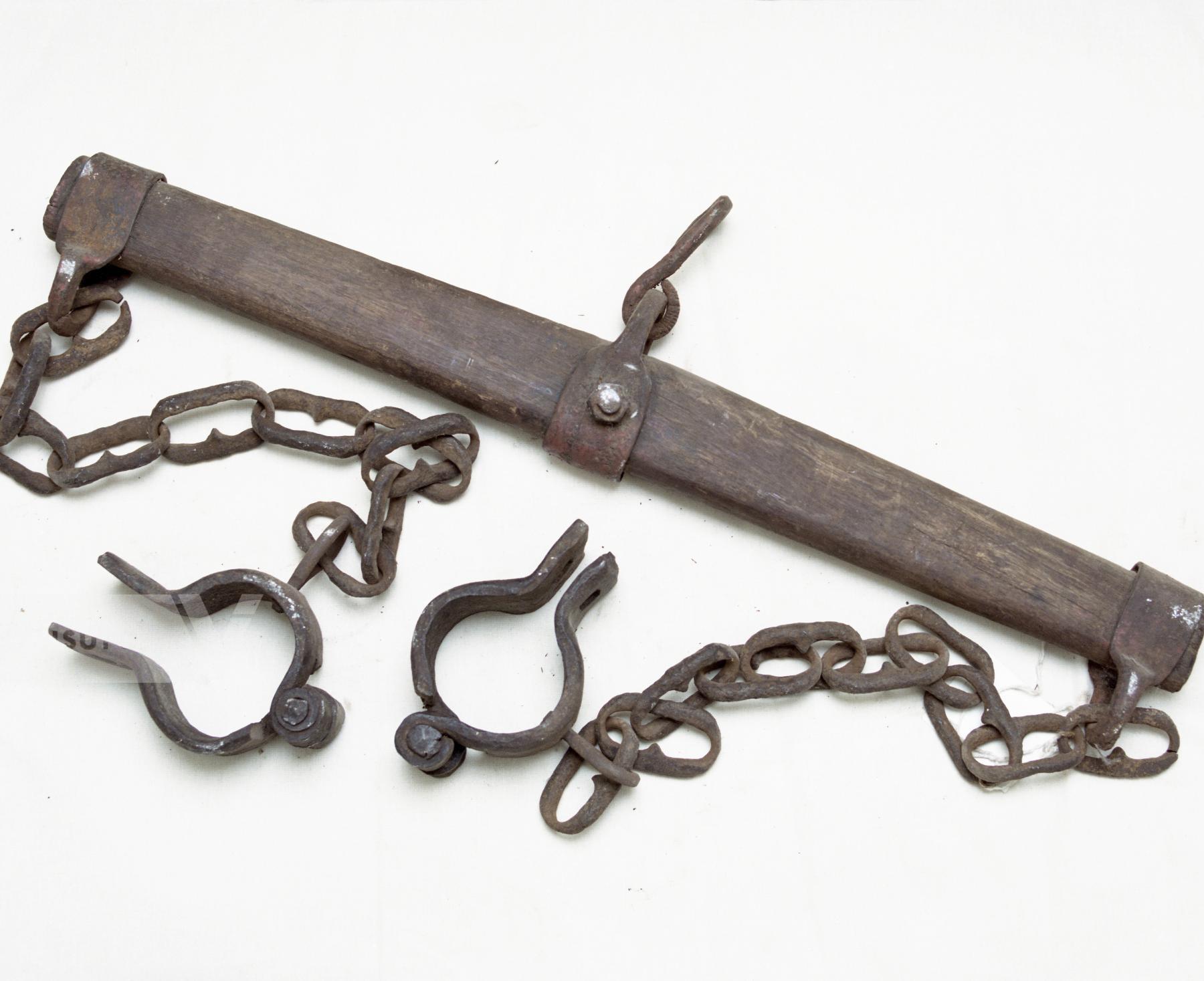
Belo Vale. Brazil. An object used to torture slaves is seen in the Slavery Museum of Belo Vale. The Slavery Museum is one of the few institution in Brazil that shows the slavery past of the Country.
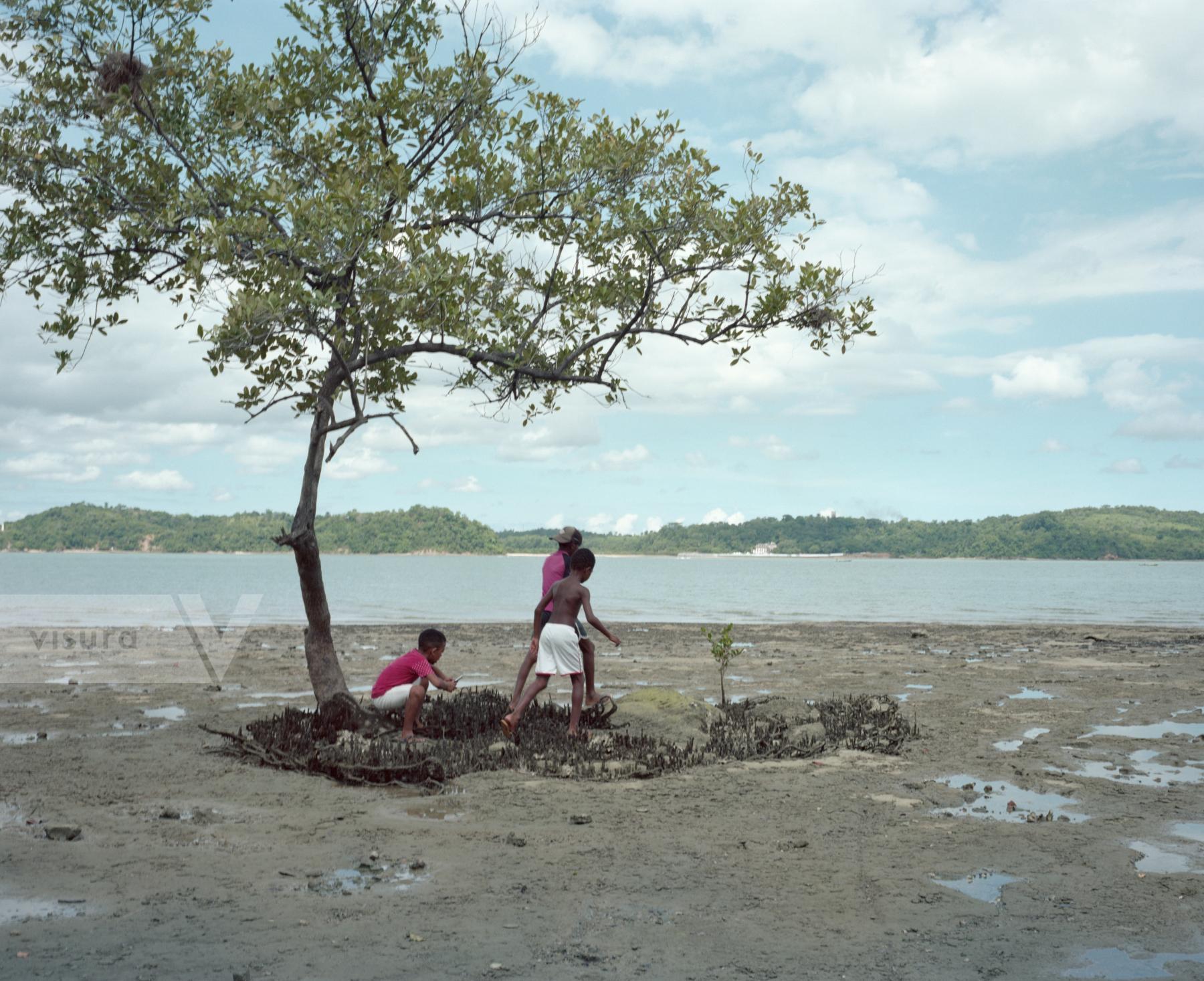
Ilha da Maré, Bahia. Children from Ilha da Maré play while searching for seafood. The Ilha da Mare is the home of several Quilombola’s communities that live of fishing. The waters where they fish are polluted with petrochemical residues and other chemical components. On the land of the island is possible to spot places where the oil come out from the ground. Most of the activists of the Island are women and they carry on the unity of the community and the fight for their basic rights.
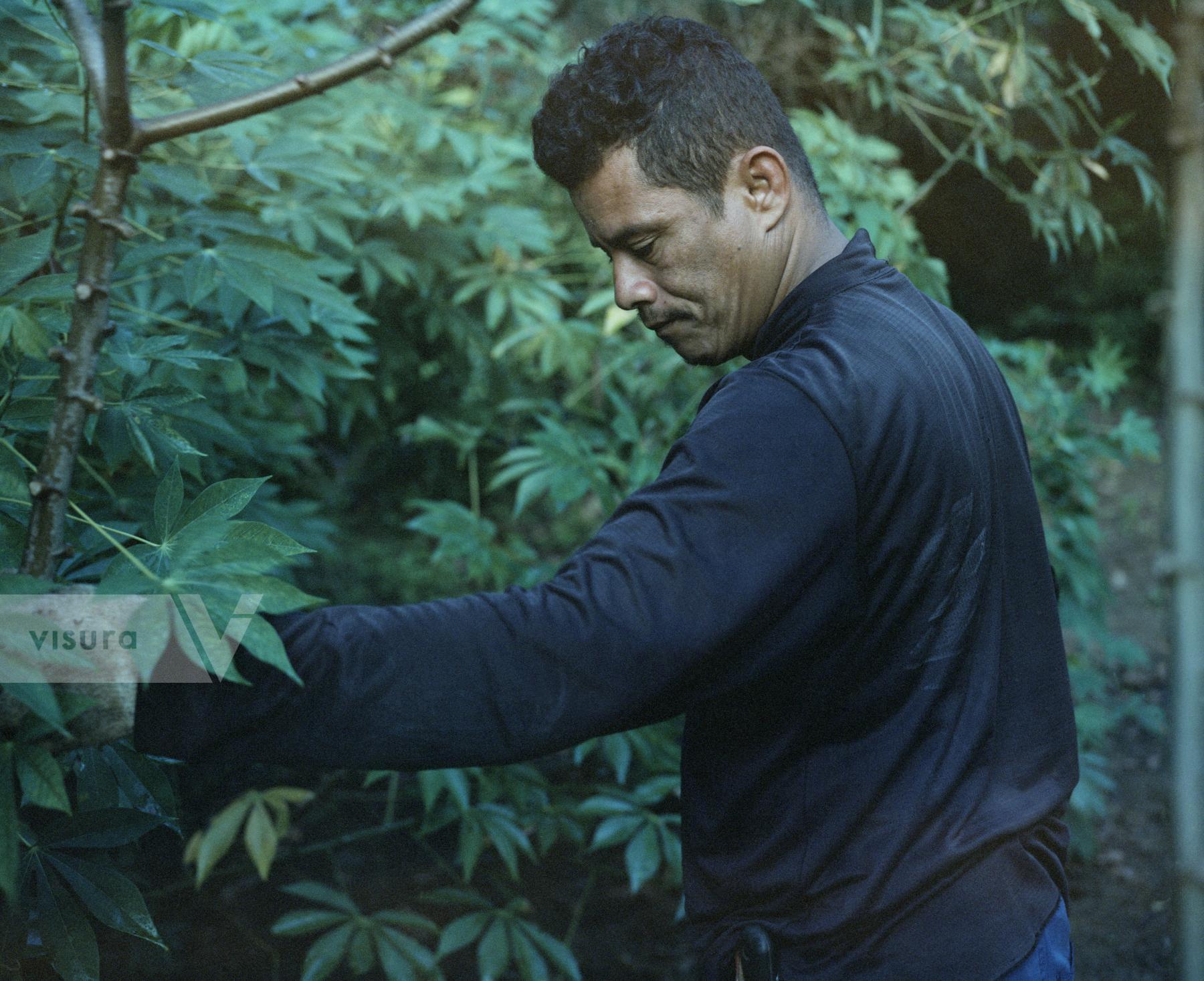
Candeias, Brazil. Elaine's husband check his manioca in his horta. The constant land grabbing by the nearby companies make it difficult live in the Quilombo especially for a community that live of fishing and self growth vegetables. "Boca do Rio" was community of 6000 people, since the building of the commercial port of Aratu, that surround the Quilombo", the population dramatically decreased. The constructions works for the port expansion and the presence of several petrochemical companies make the life of the Quilombola very difficult: they don't have easy access to their home, the city hall service (school bus, tap water, sewer) aren't provided to the community and the pollution from the companies is very high.
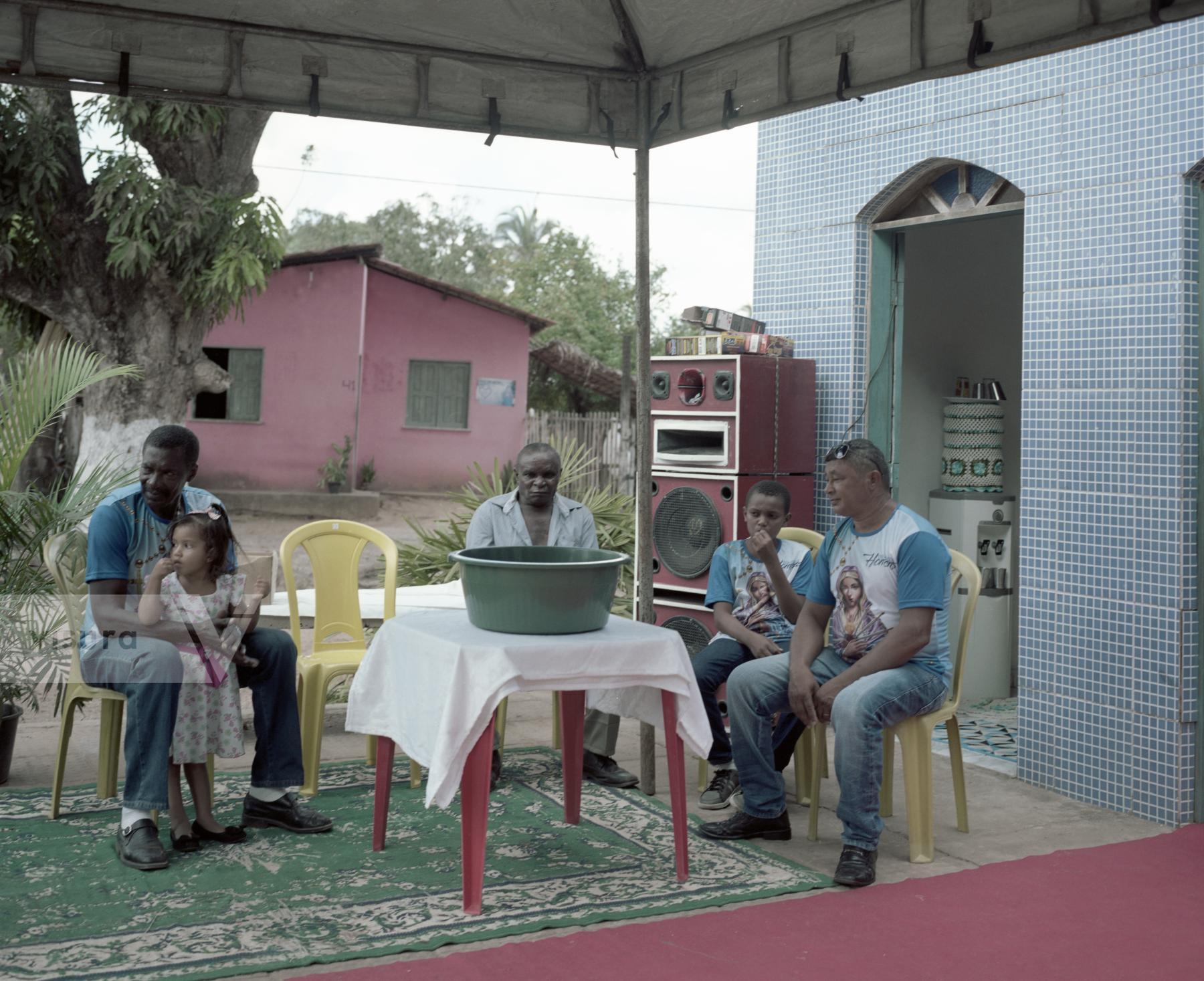
Santa Rosa do Pretos, Maranhão, Brazil. People from the Quilombo Santa Rosa dos Pretos during a religious festivity.
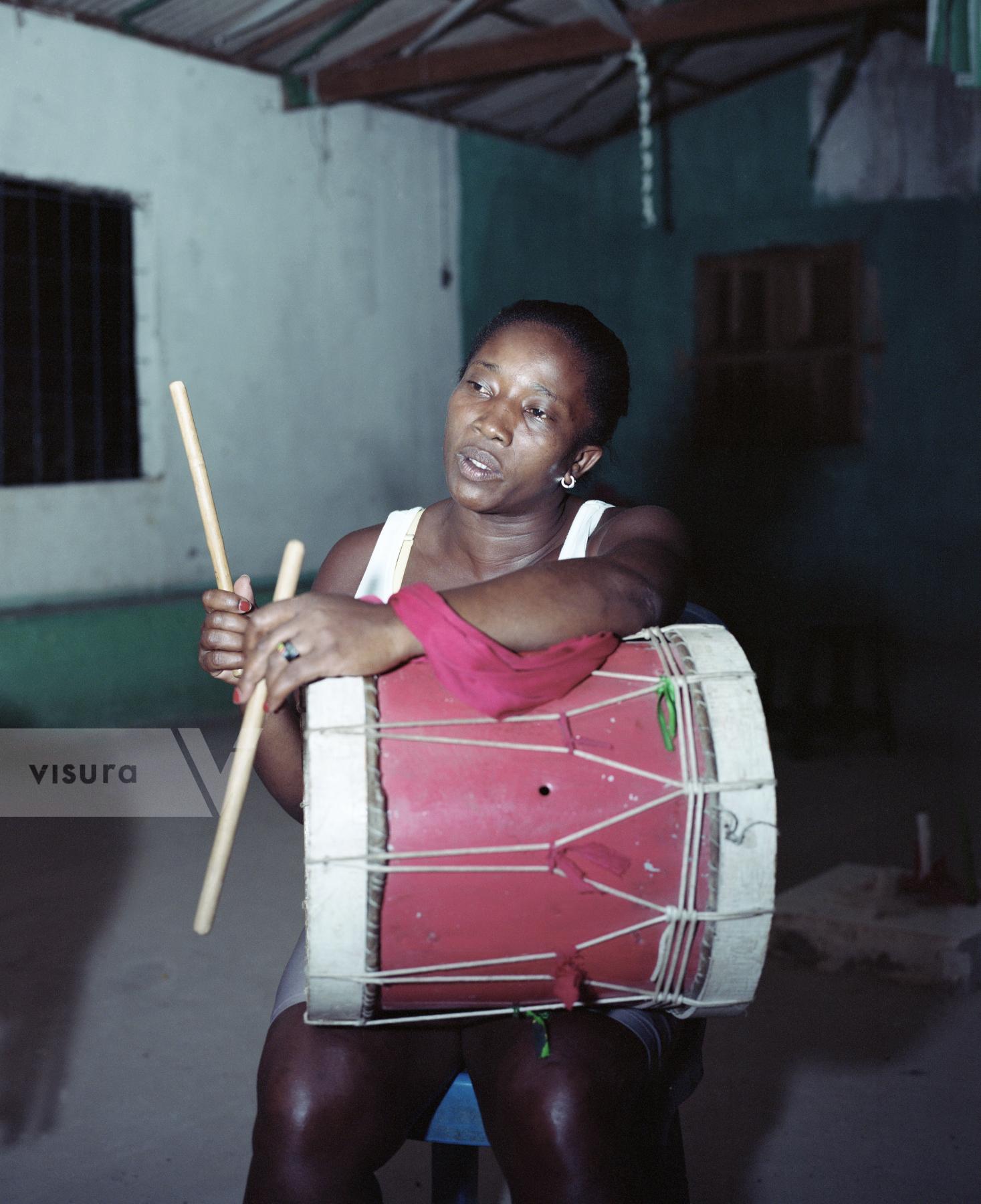
Santa Rosa dos Pretos, Maranhão, Brazil. A drummer od the Quilombo of Santa Rosa dos Pretos. Drums are an essential part of the Afro-Brazilian culture. In Santa Rosa dos Pretos the drumming tradition was lost until the wo- men of the Quilombo started to play again. Today around 30 people play the drums during the festivity, most of them are women.

Candeias, Brazil. Luciano, and activist from the Quilombo "Boca do Rio", showing to other members of the community the easier way to reach the local engenho. "Boca do Rio" was community of 6000 people, since the building of the commercial port of Aratu, that surround the Quilombo", the population dramatically decreased. The constructions works for the port expansion and the presence of several petrochemical companies make the life of the Quilombola very difficult: they don't have easy access to their home, the city hall service (school bus, tap water, sewer) aren't provided to the community and the pollution from the companies is very high.
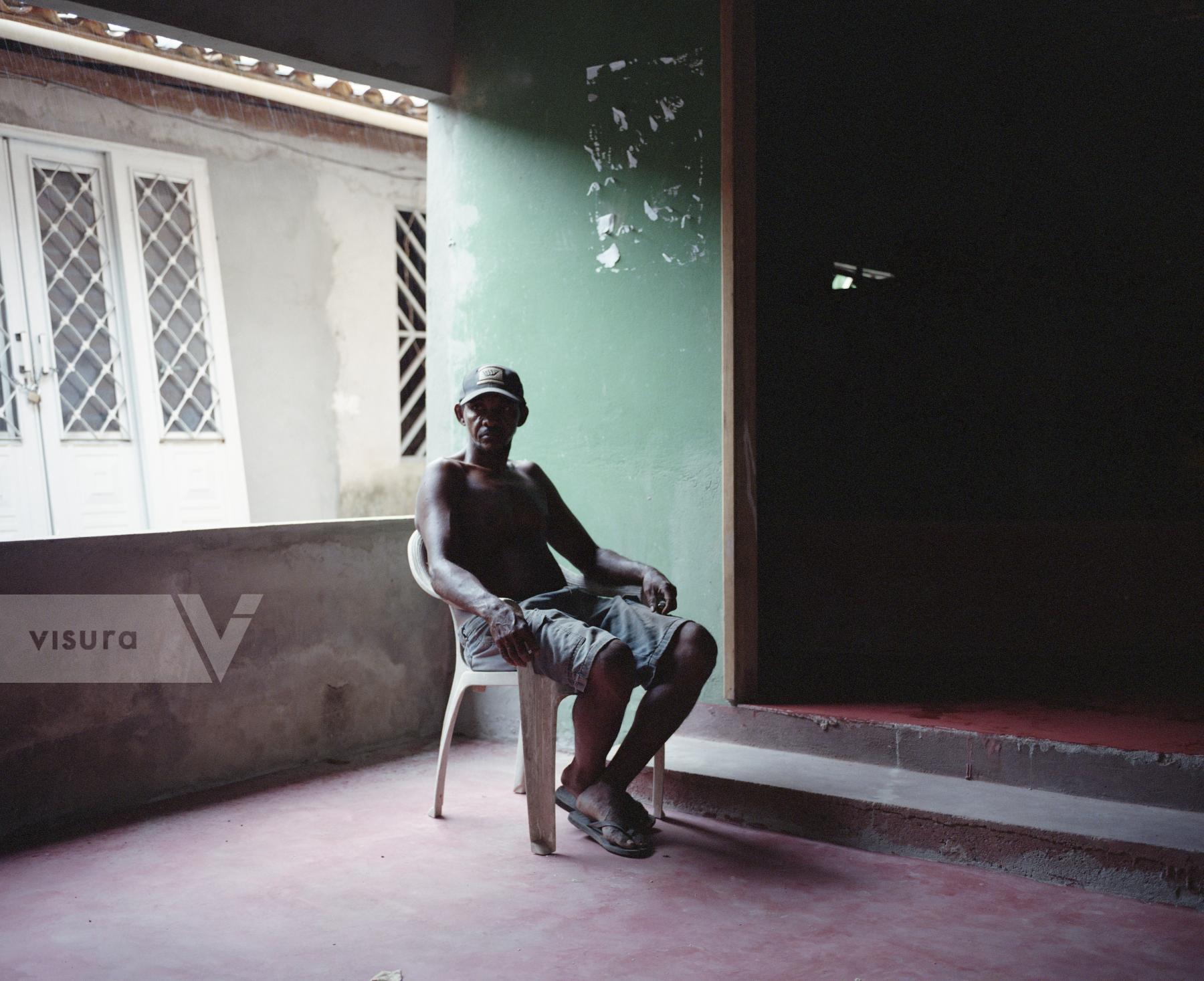
Barcarena, Brazil. A Quilombo’s Community member sat in front of his house. In the last years an Aluminium Extraction Factory polluted the territory where several Quilombos communities are located. The Quilombo’s communities members exposed the pollution and now are receiving death threats.
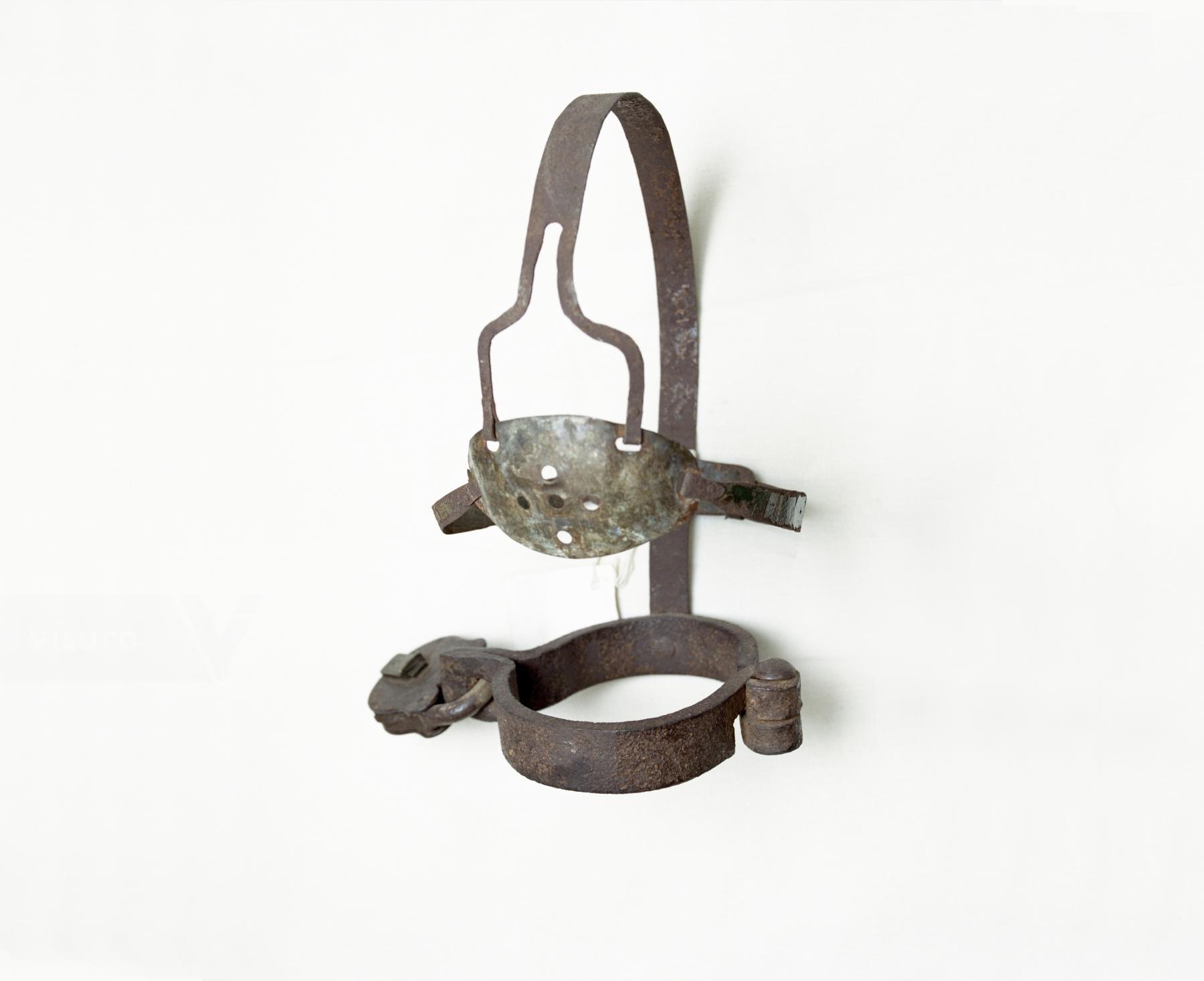
Belo Vale. Brazil. An object used to torture slaves is seen in the Slavery Museum of Belo Vale. The Slavery Museum is one of the few institution in Brazil that shows the slavery past of the Country.
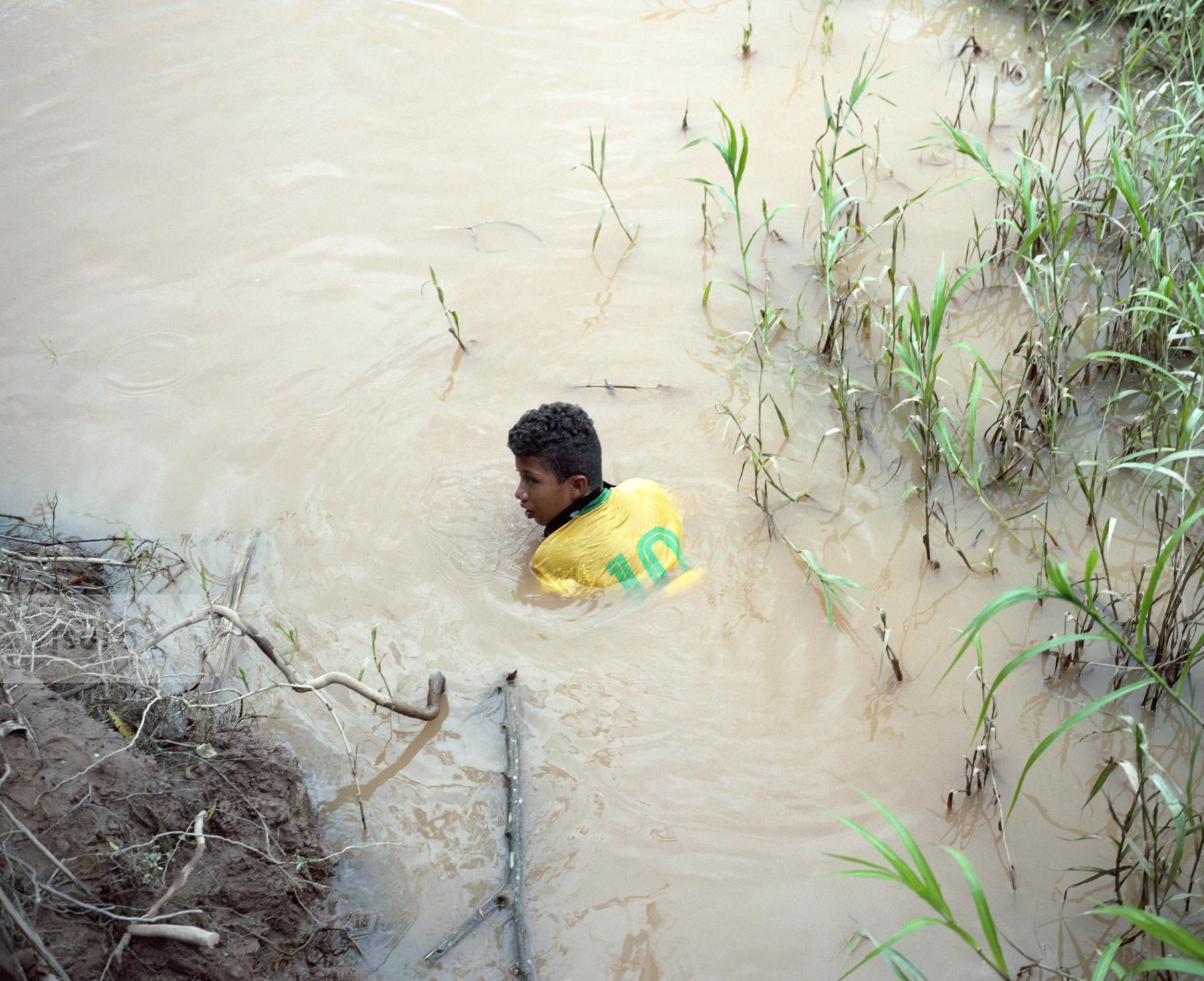
Januaria, Minas Gerais. Caio is trying to fix the water pump in the Saint Francisco River. The Quilombo of Croatá doesn’t have tap water. Despite they requested the installation of the pipes to the City Hall, the construction work are not carried out and also no water truck is sent to the community which have to use the River waters. After the collapse of the mine in Brumadinho the waters of the Saint Francisco River are considered highly polluted.

































